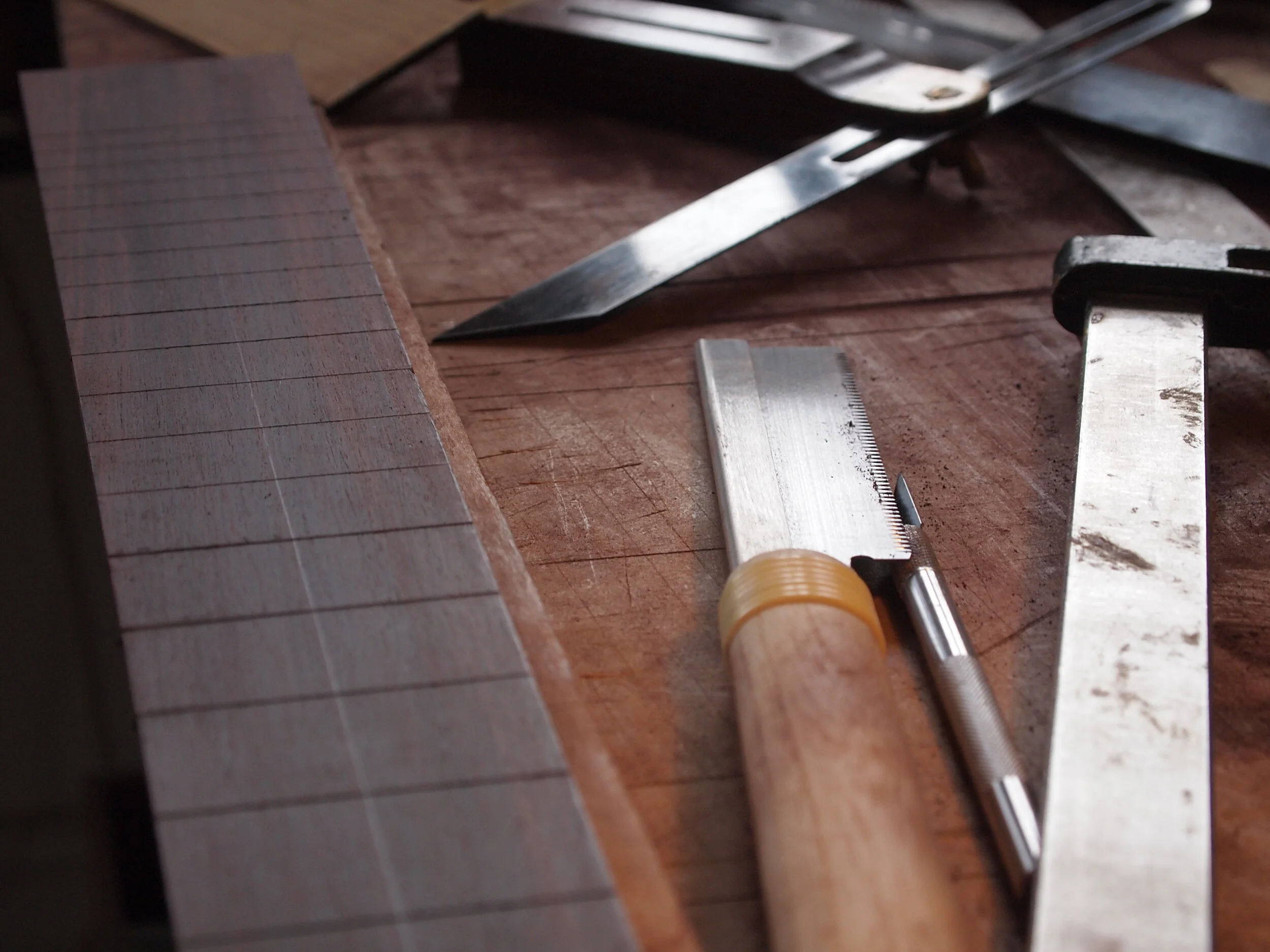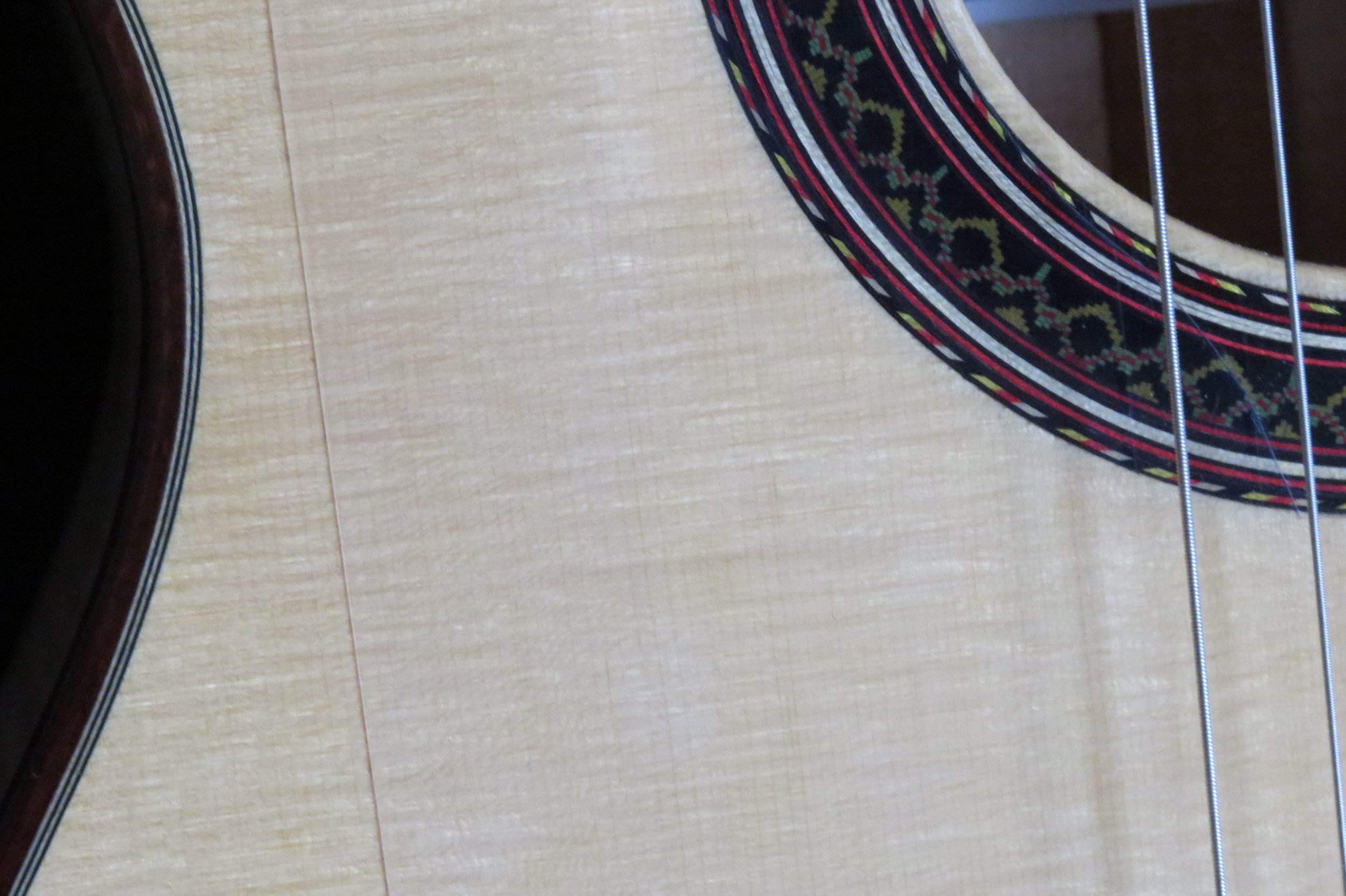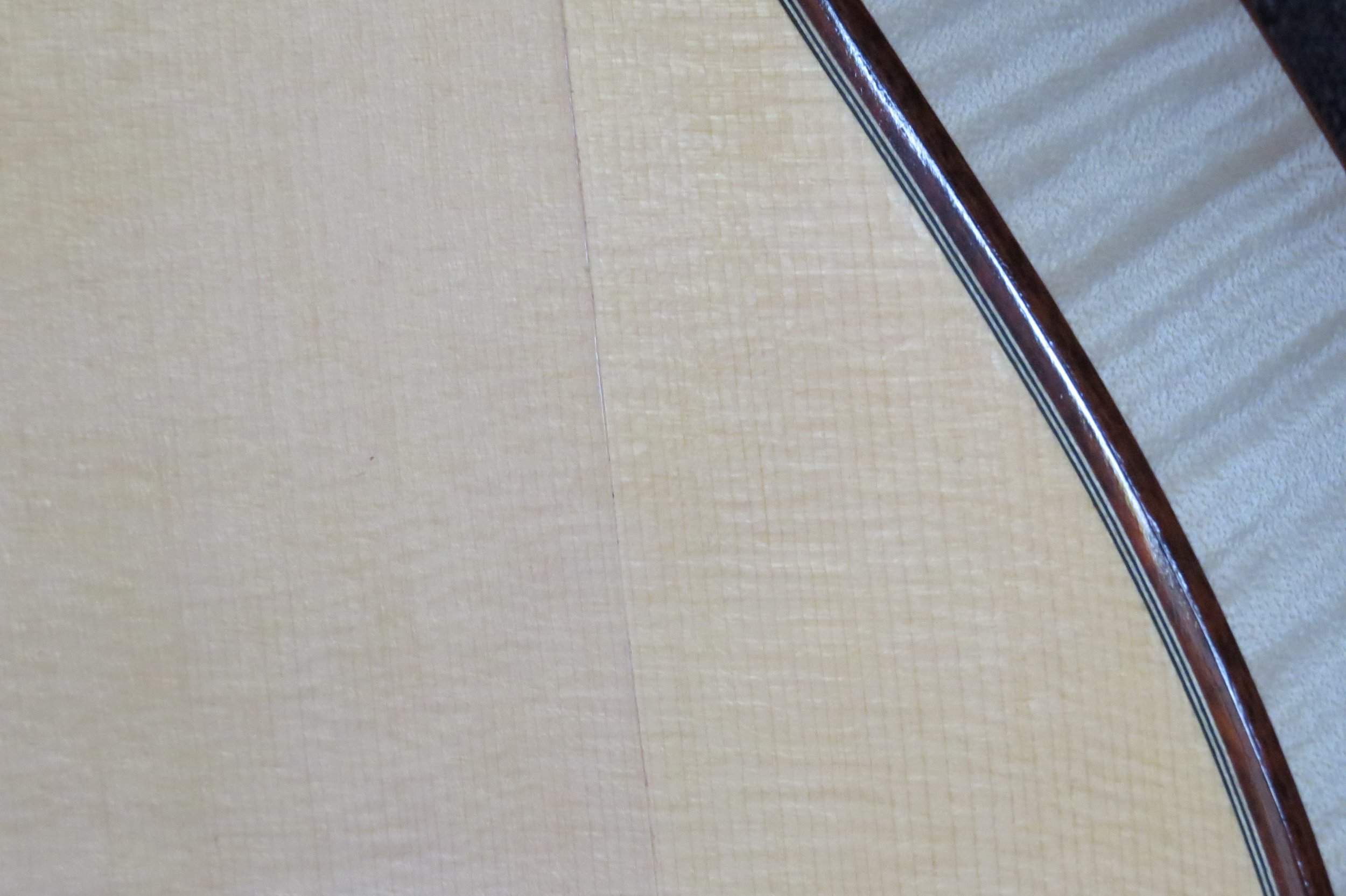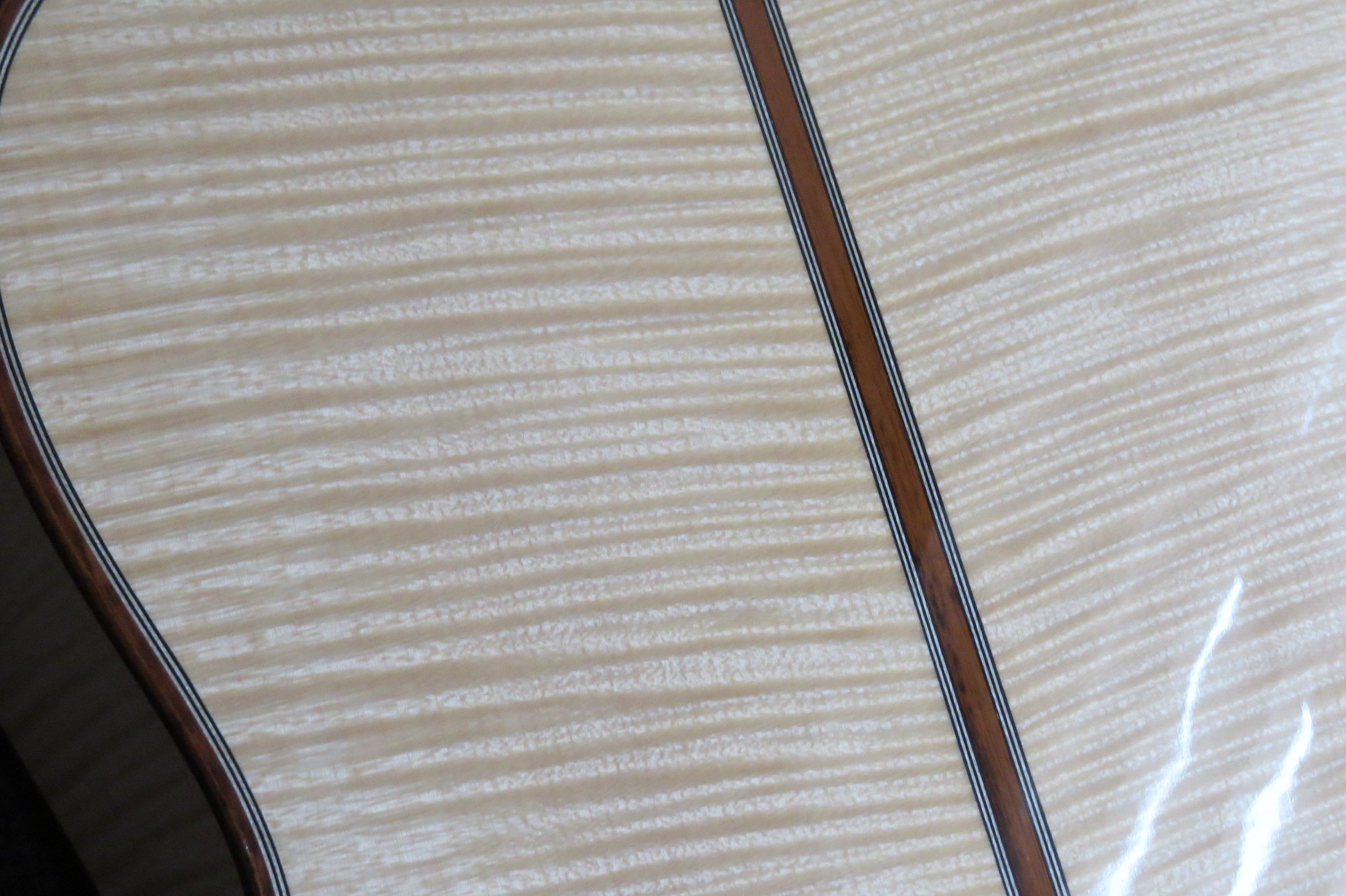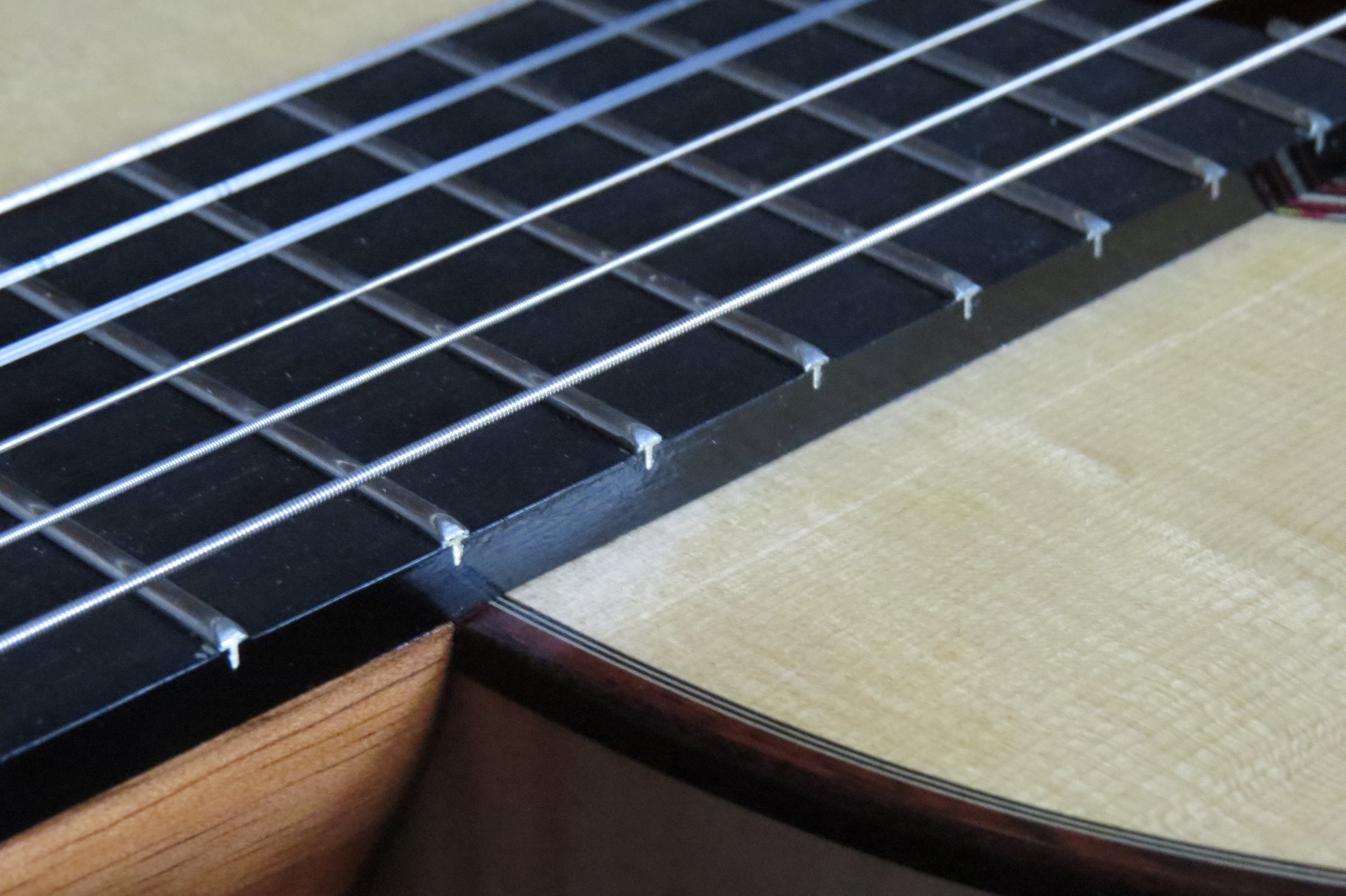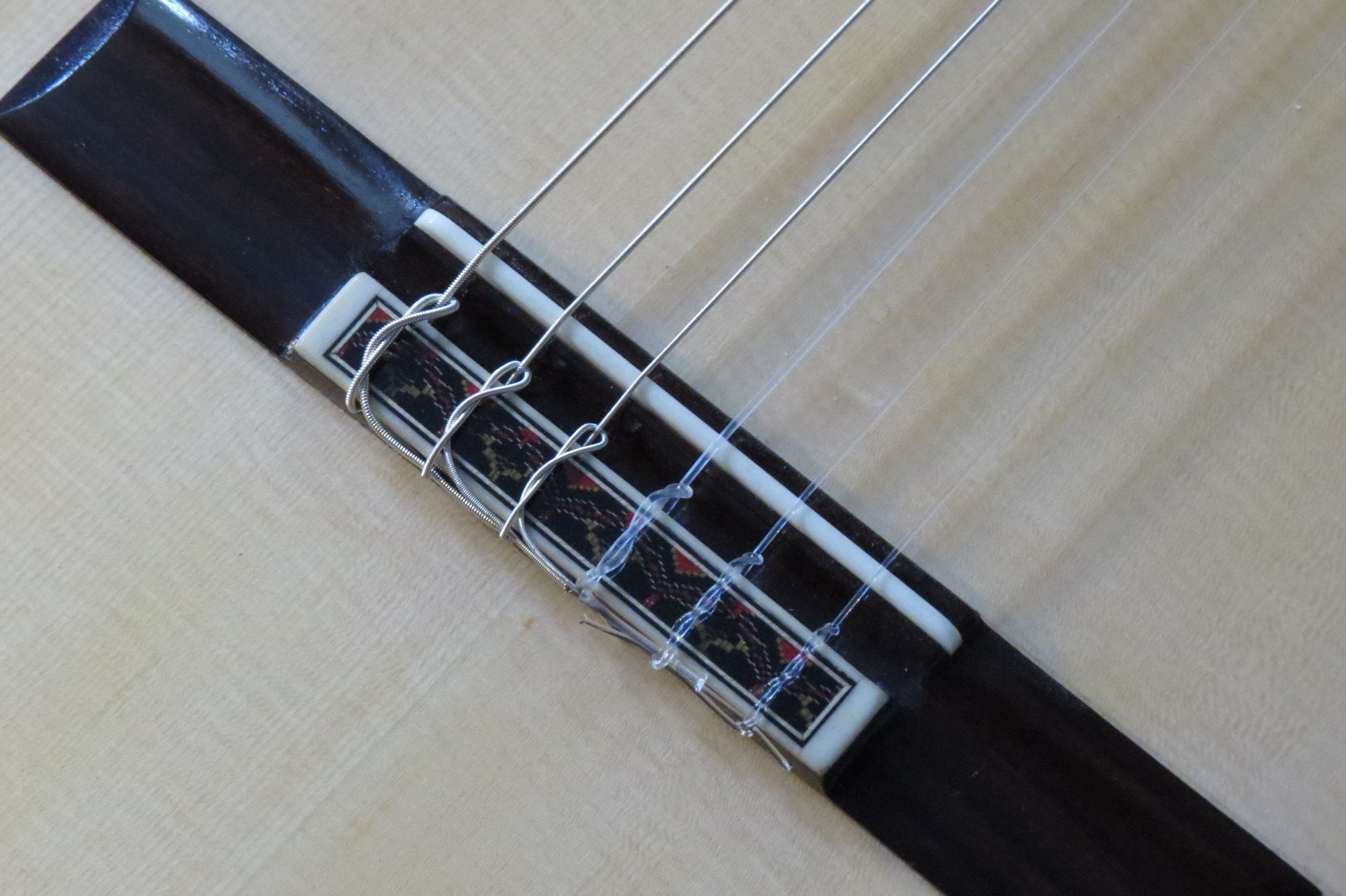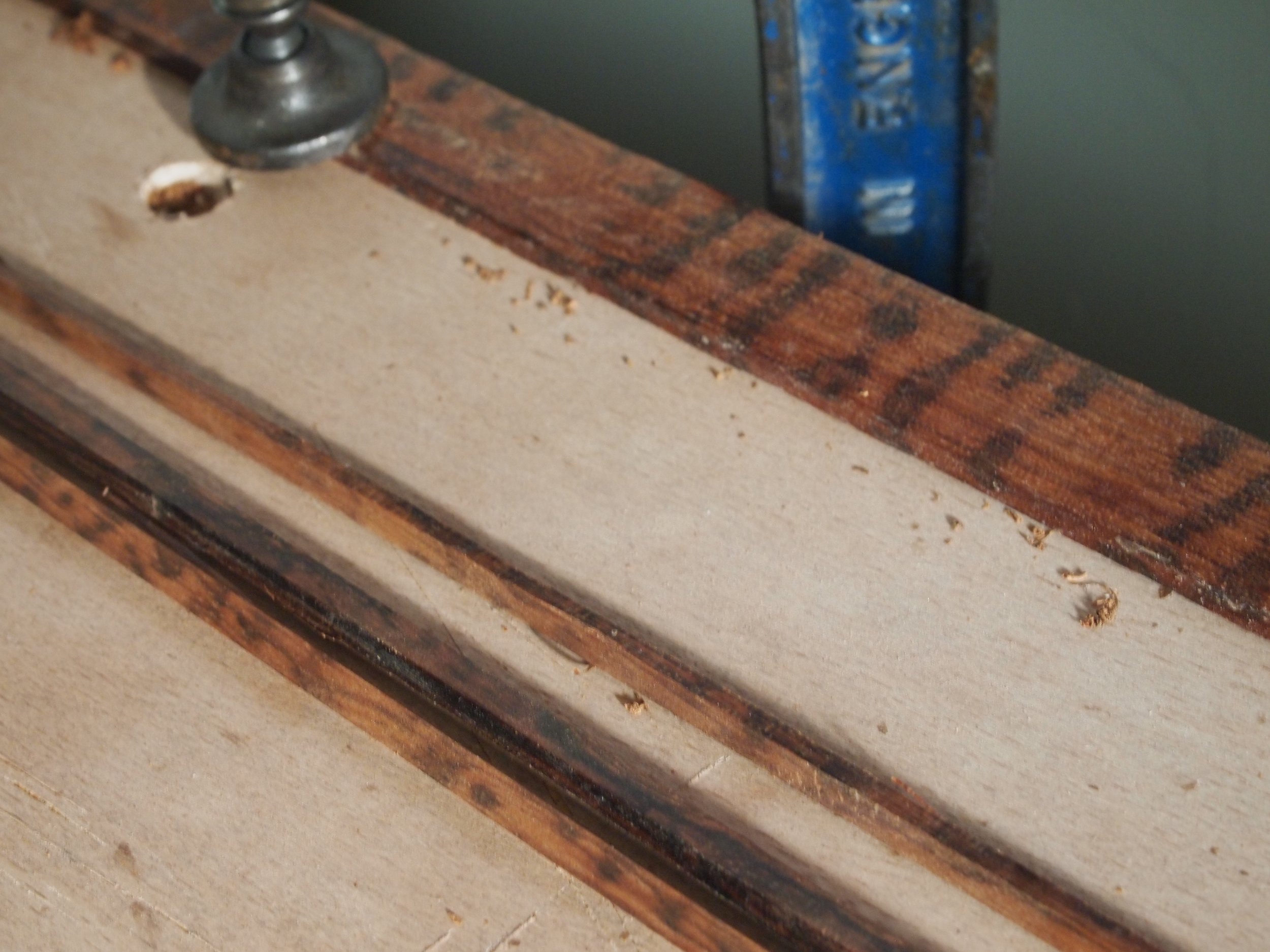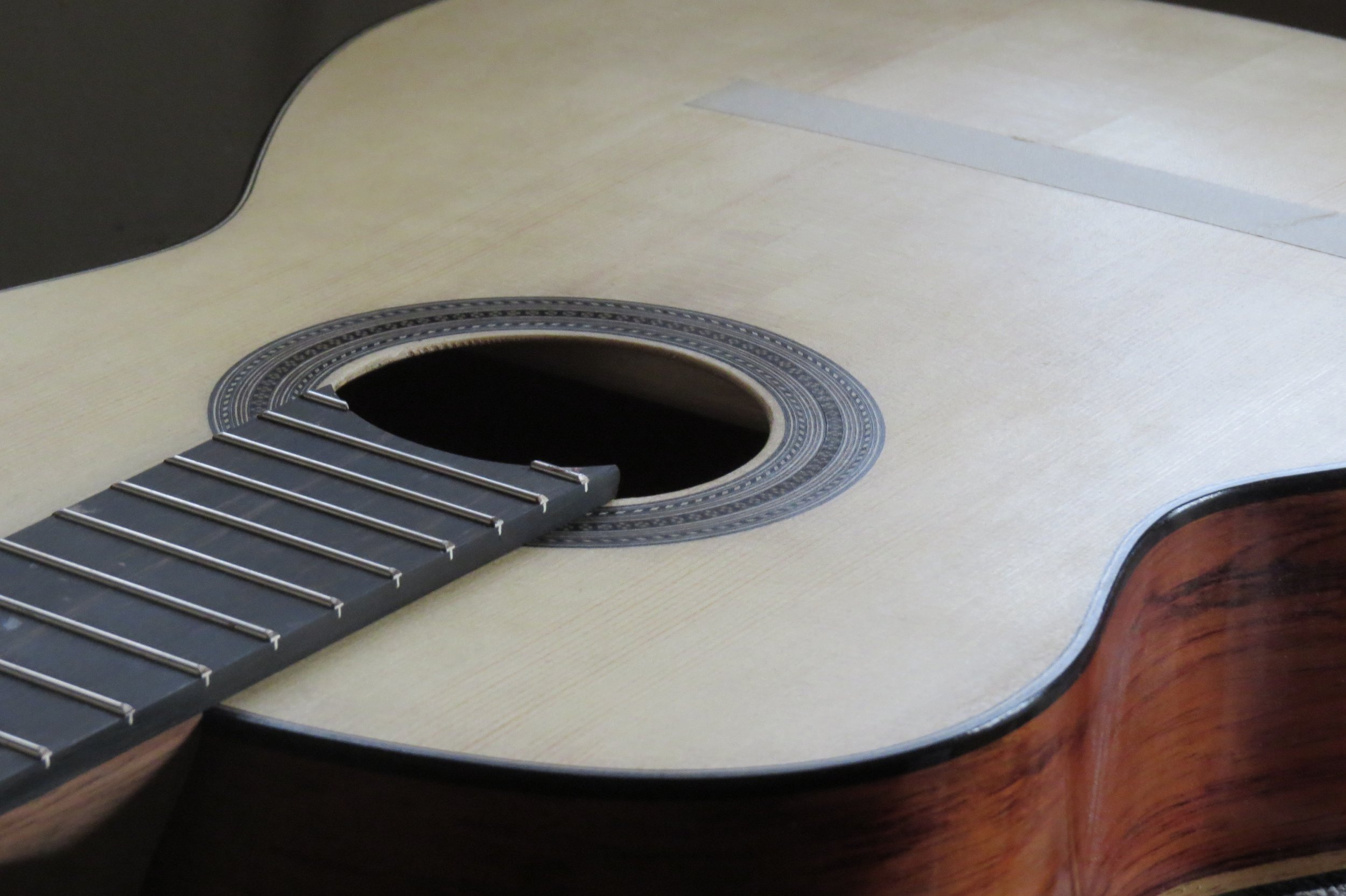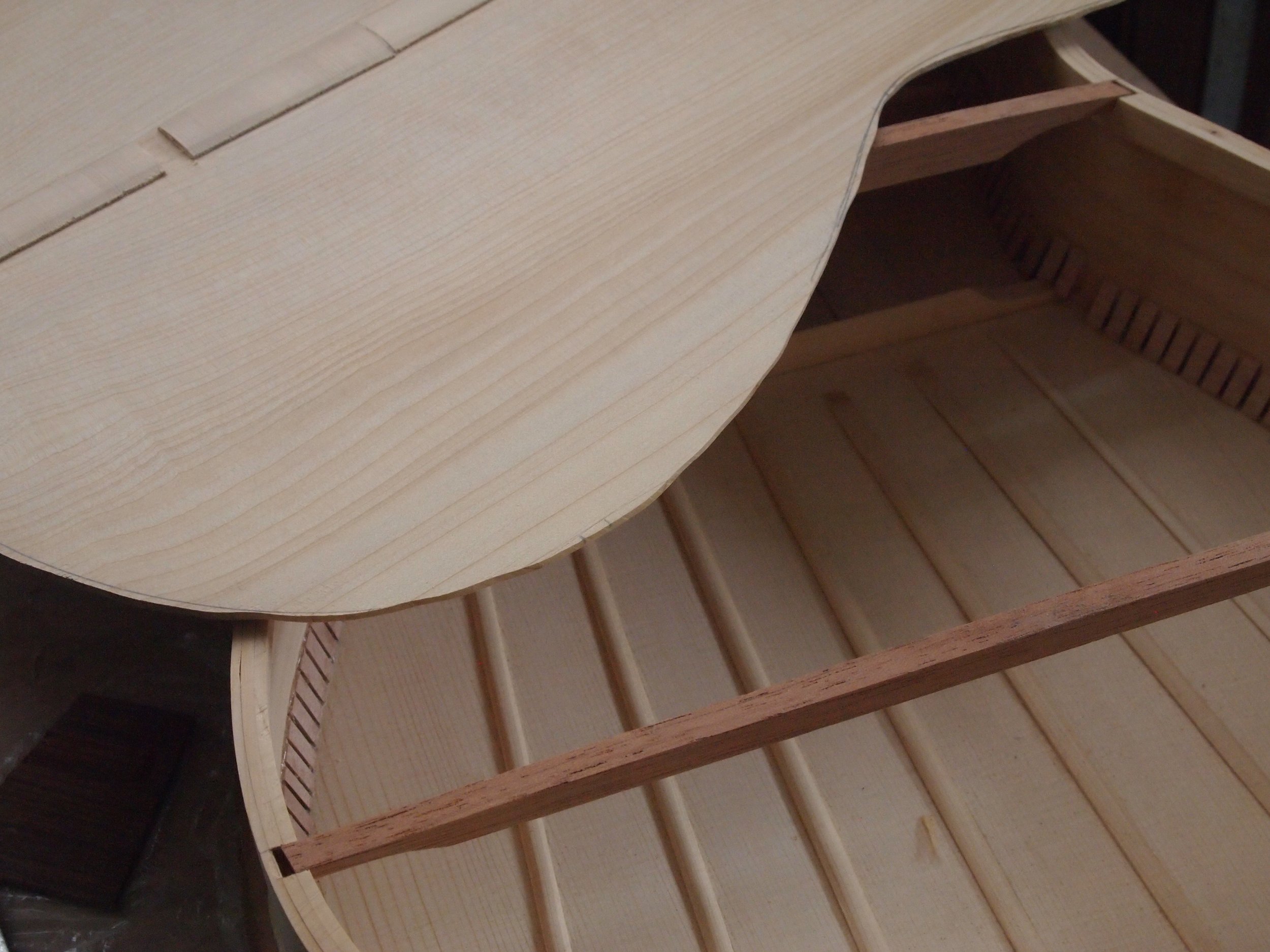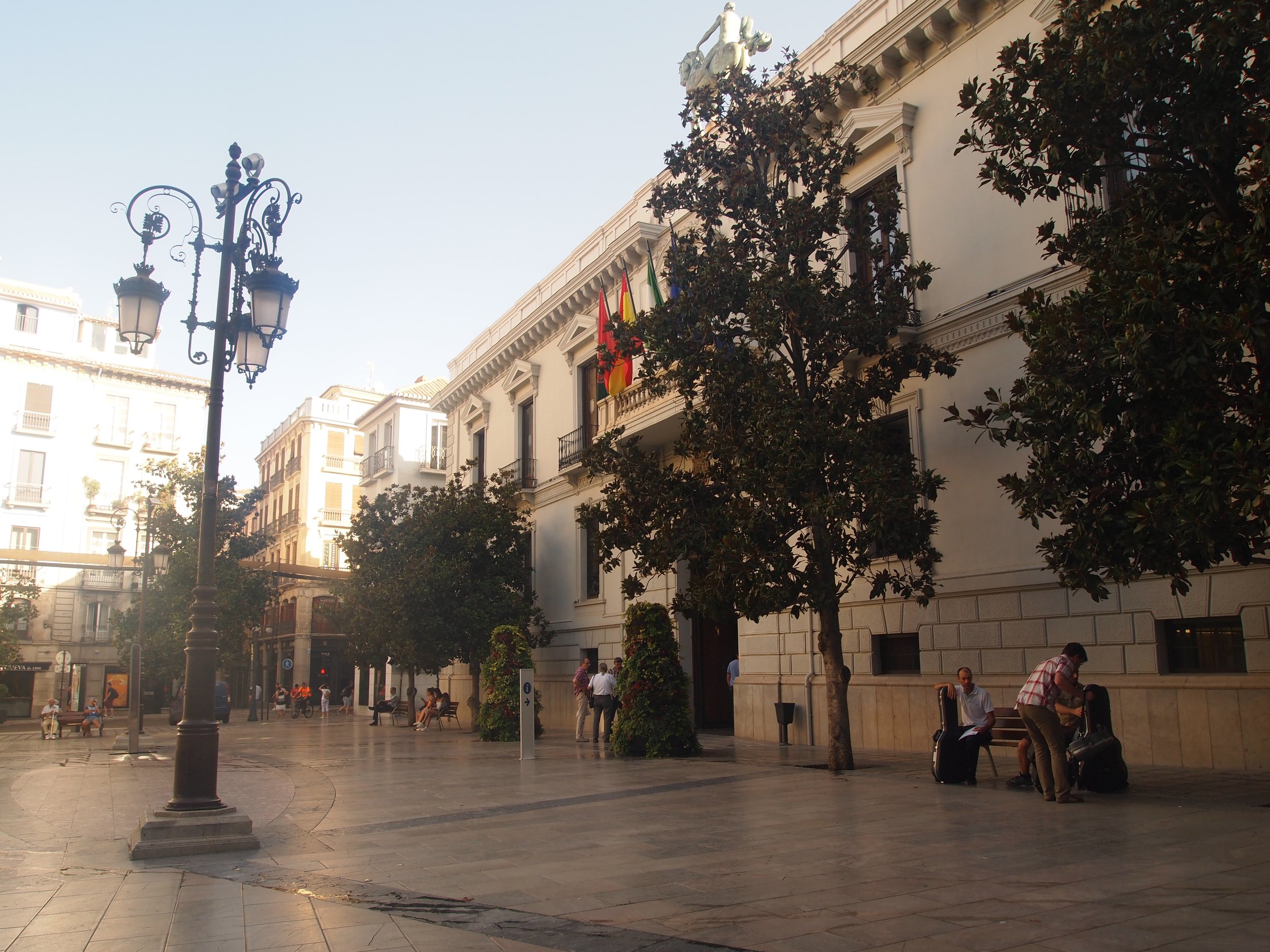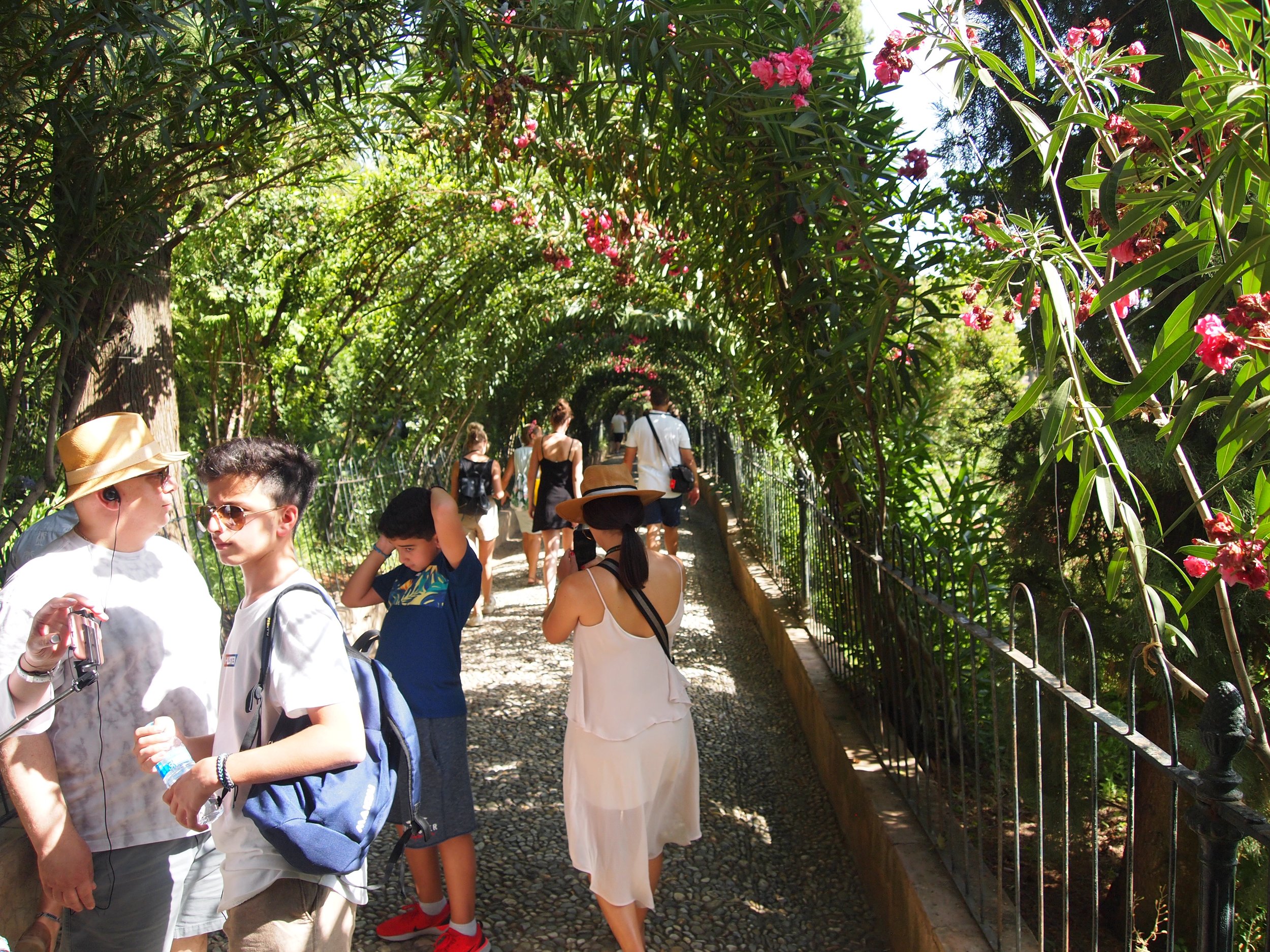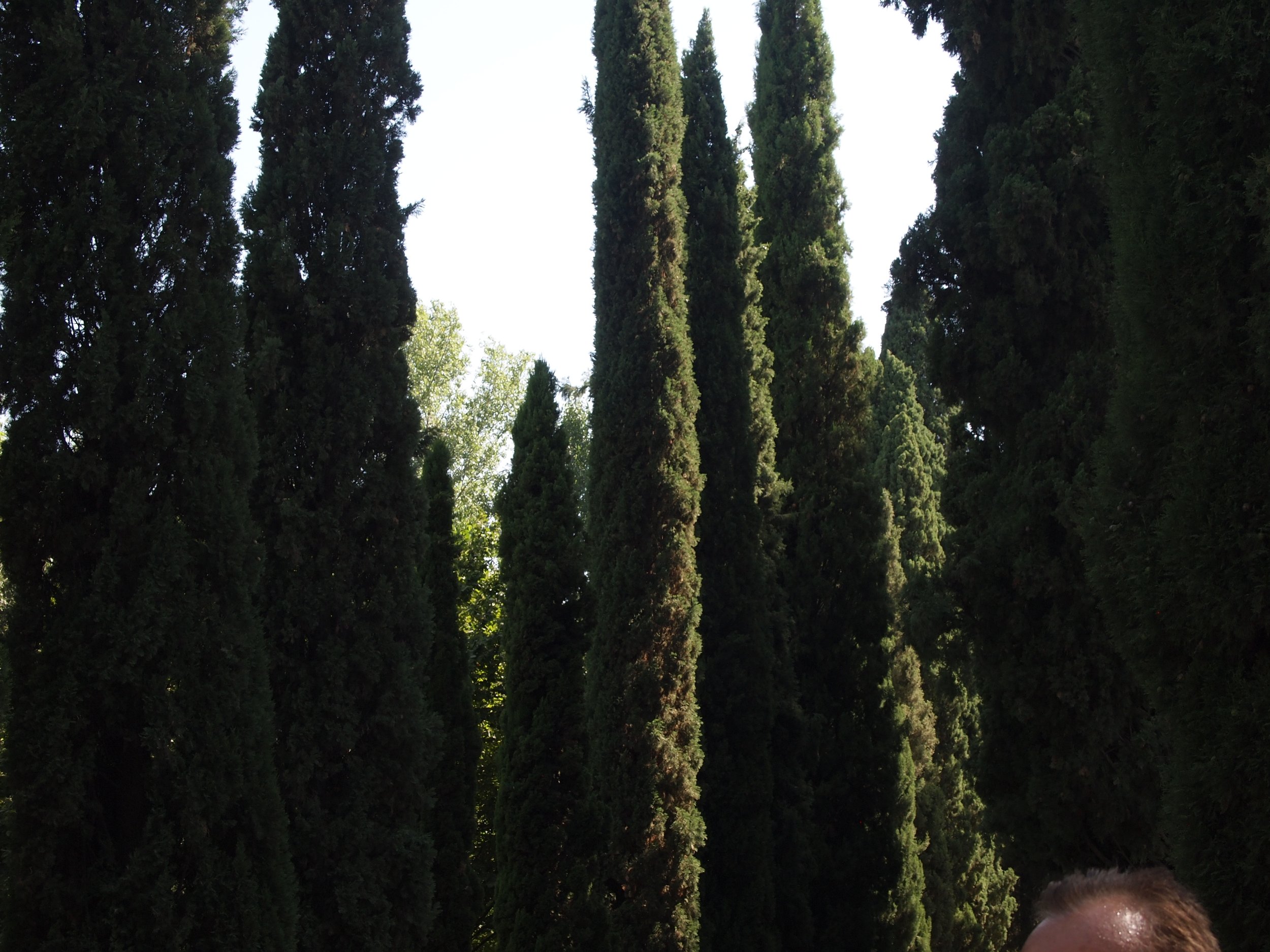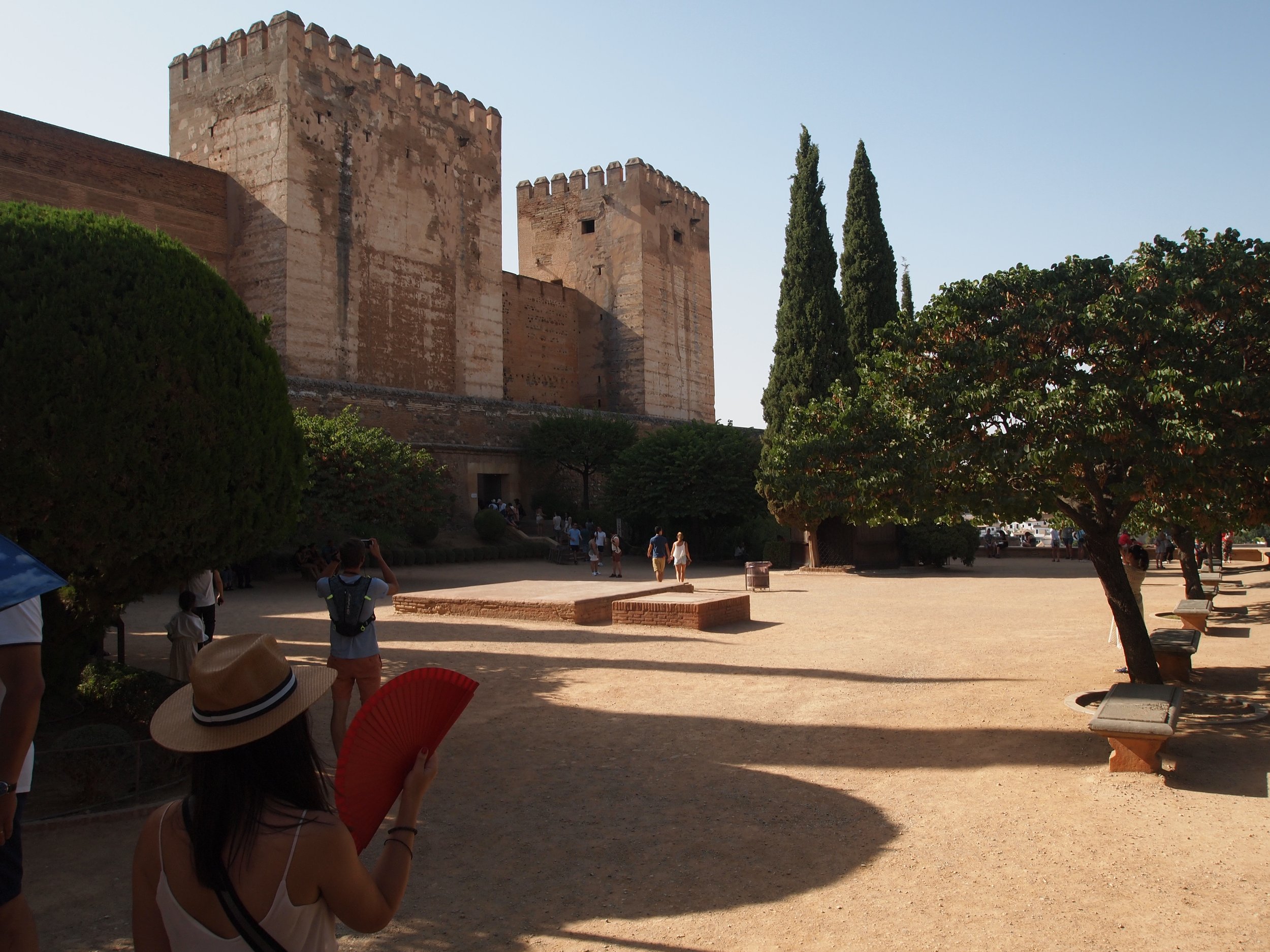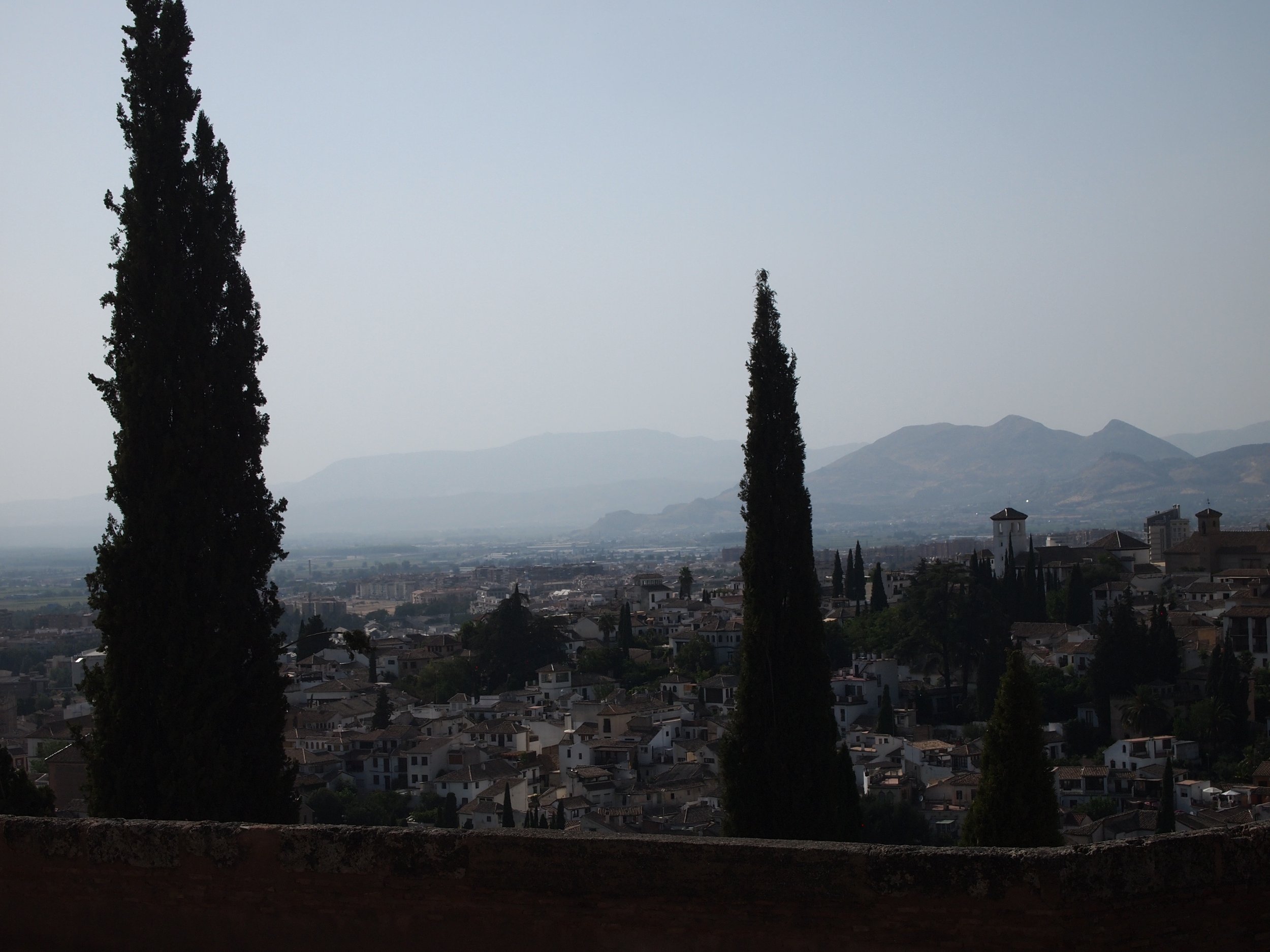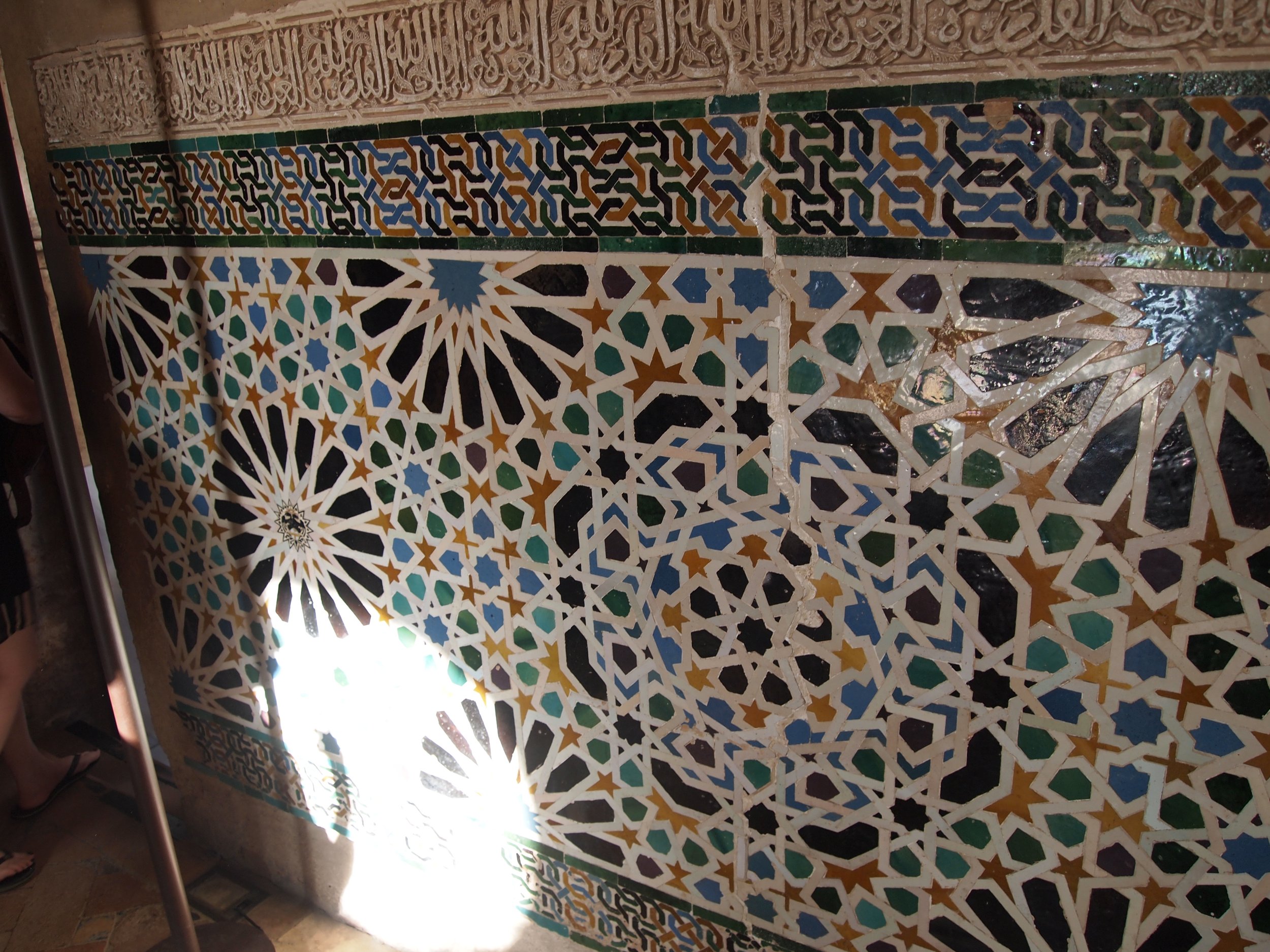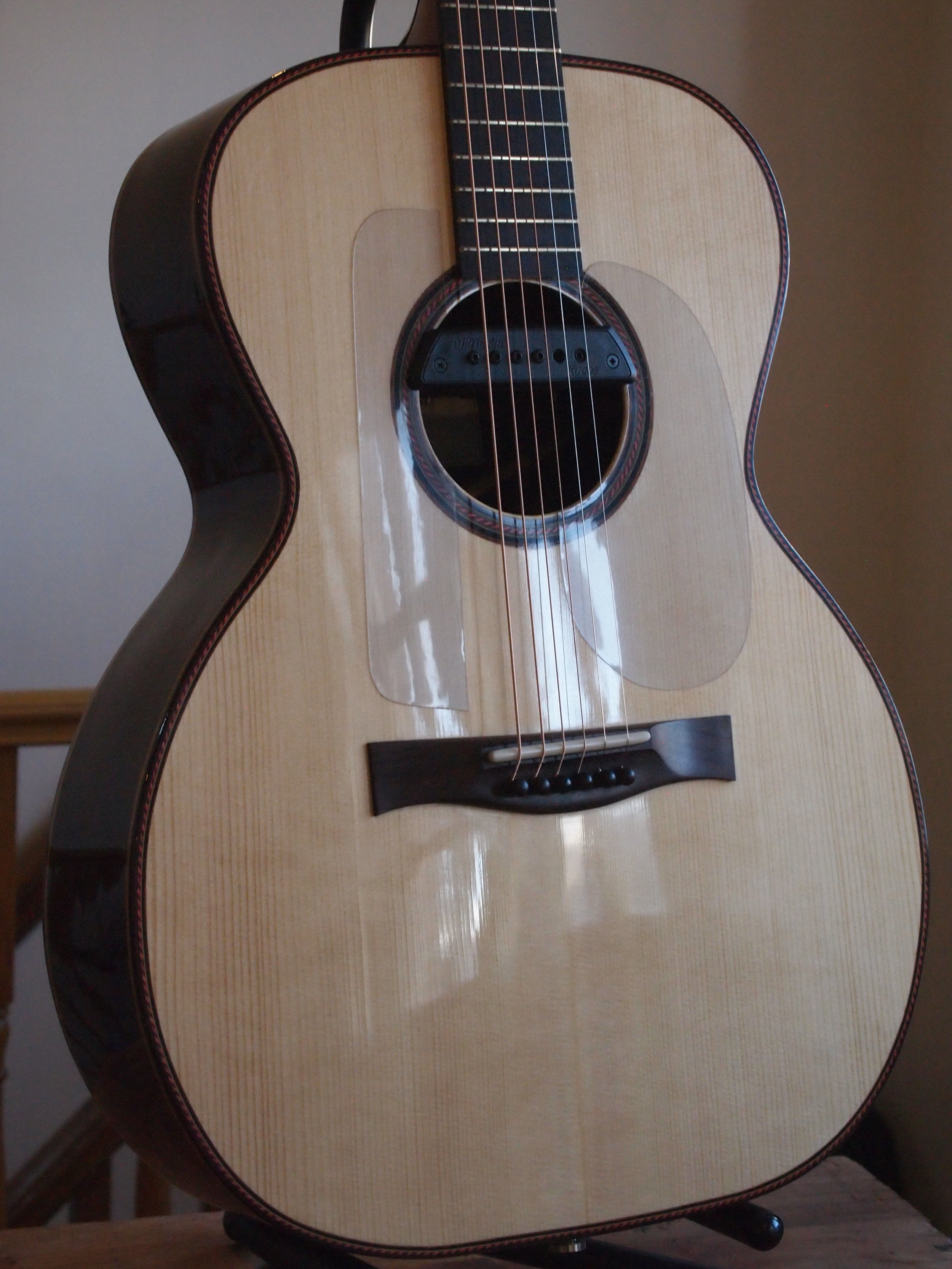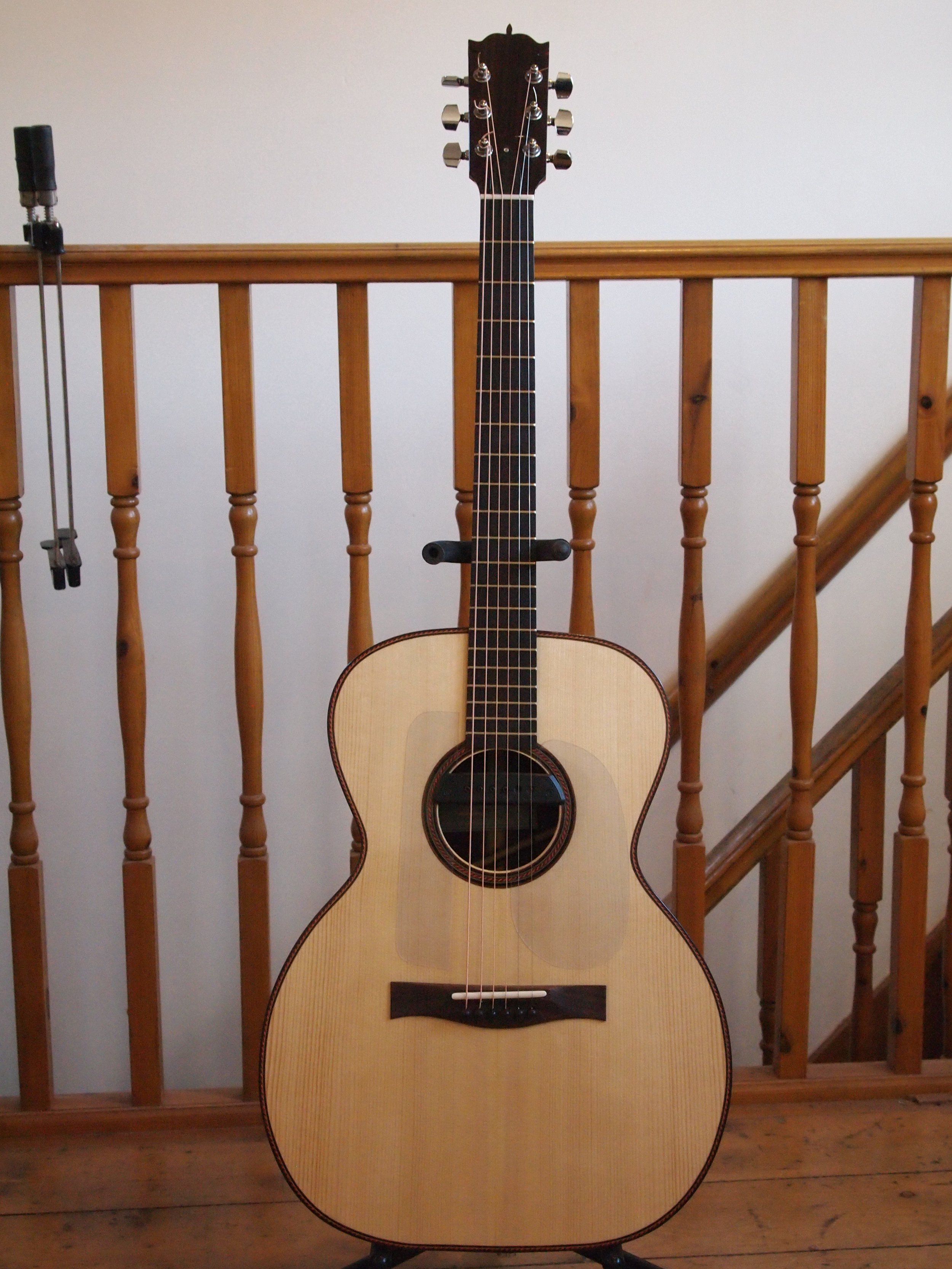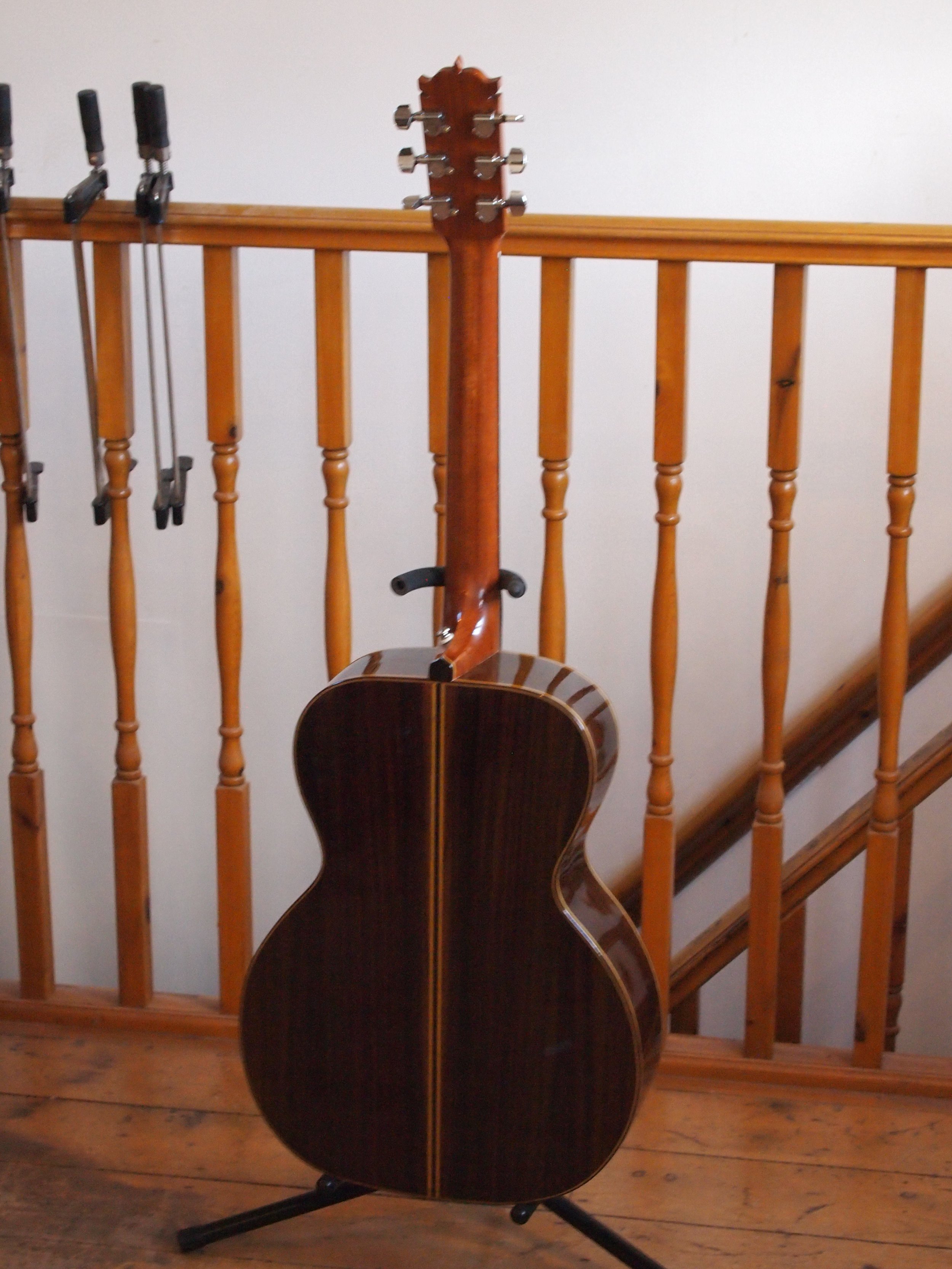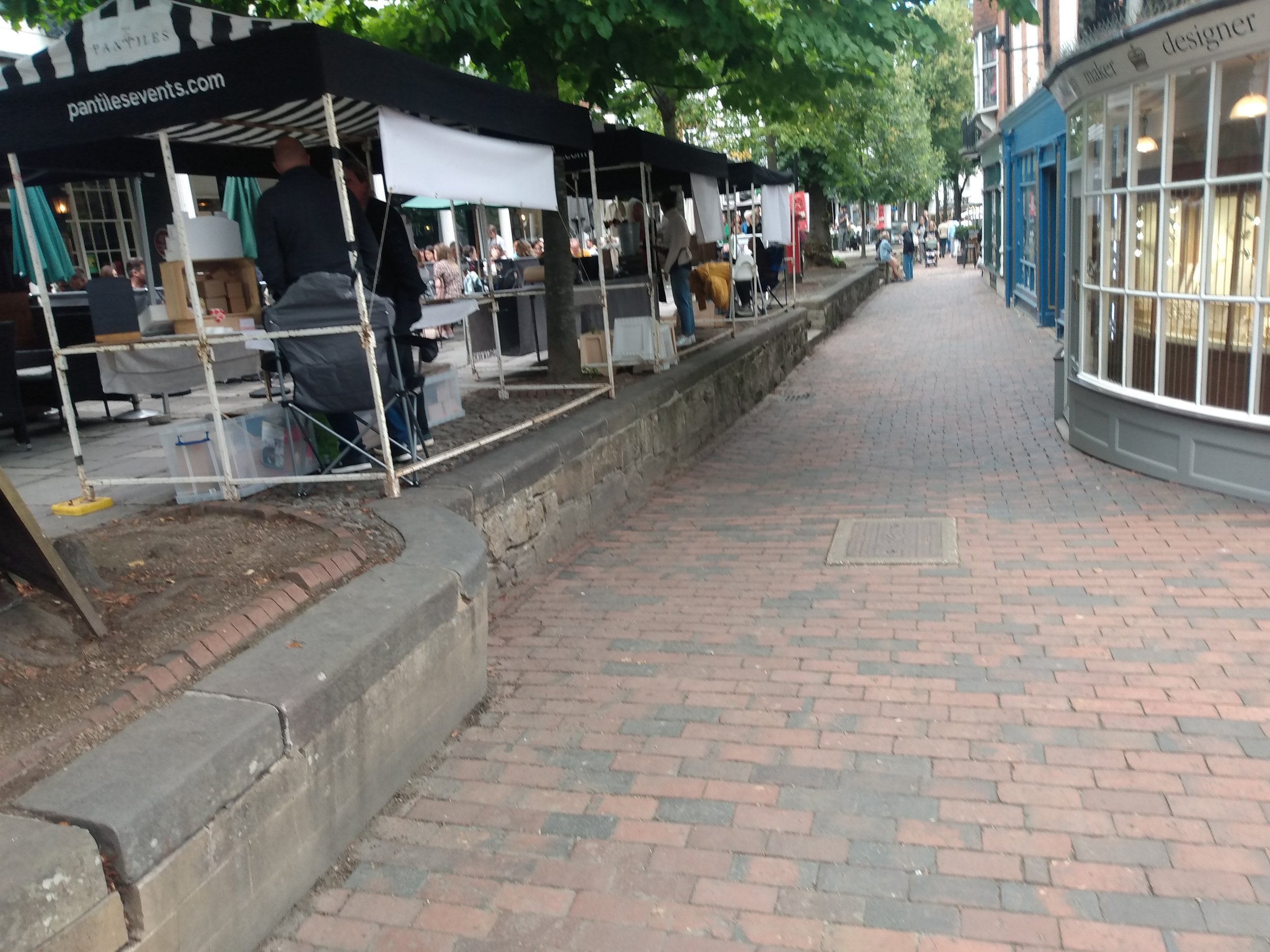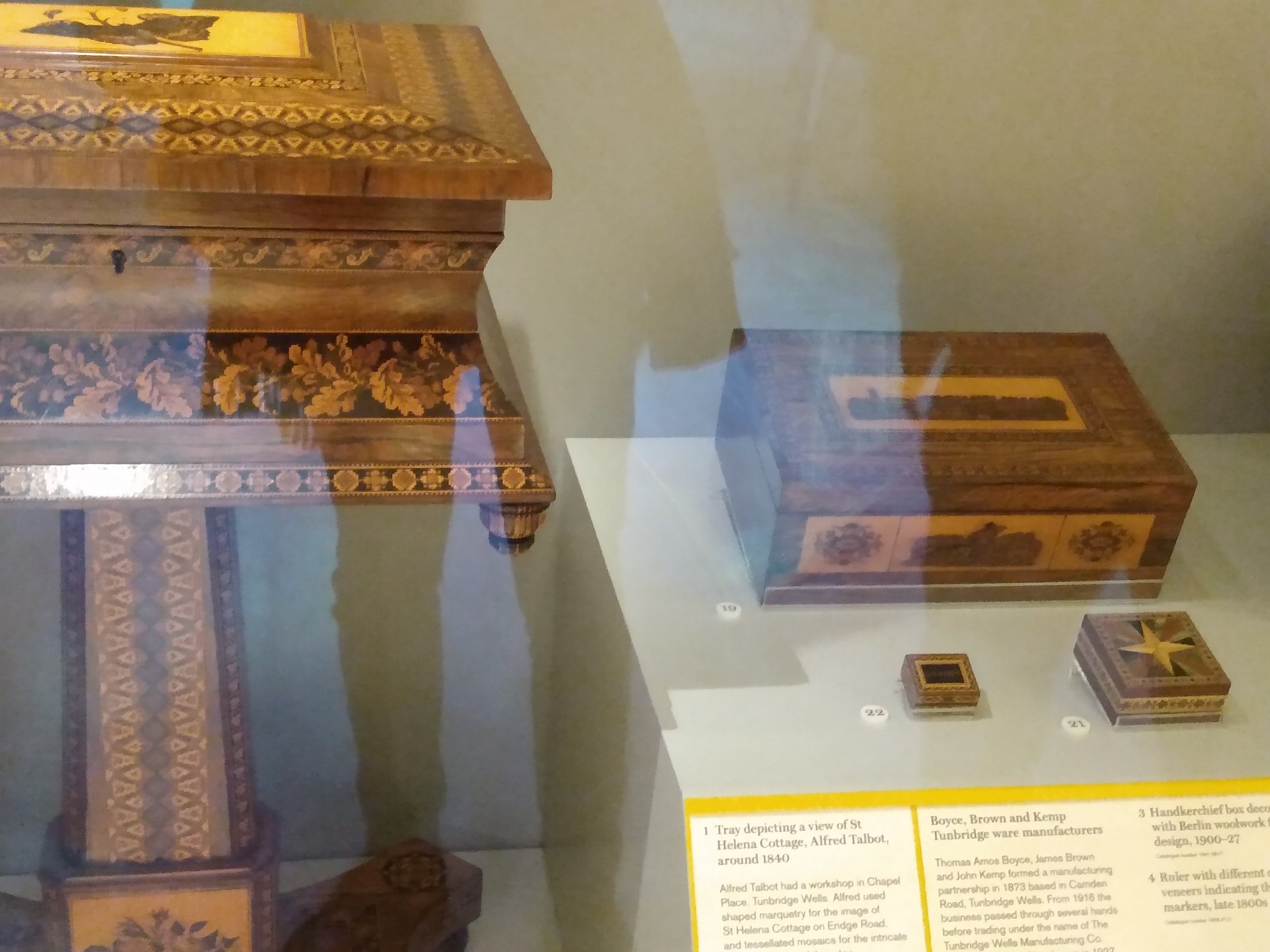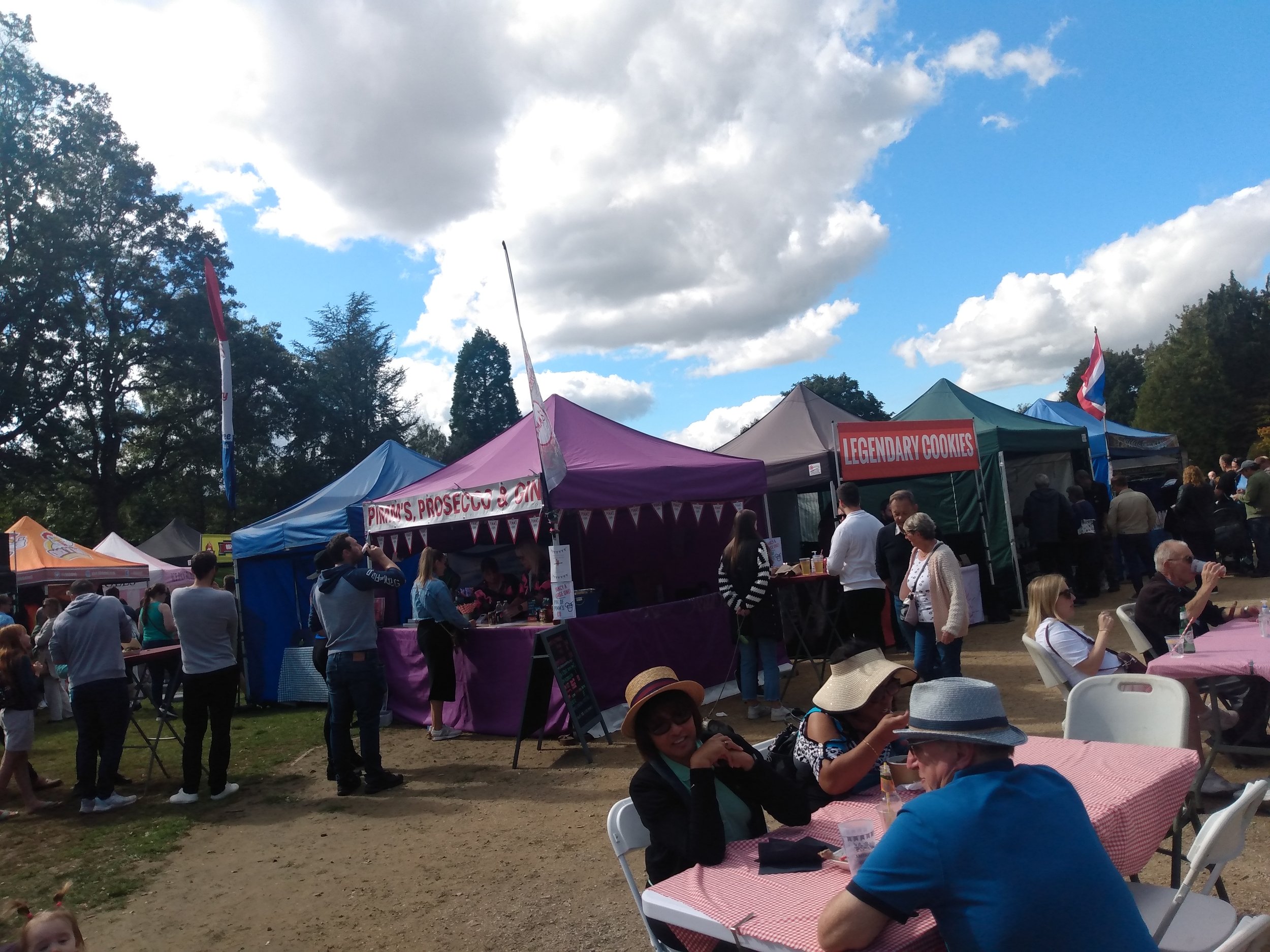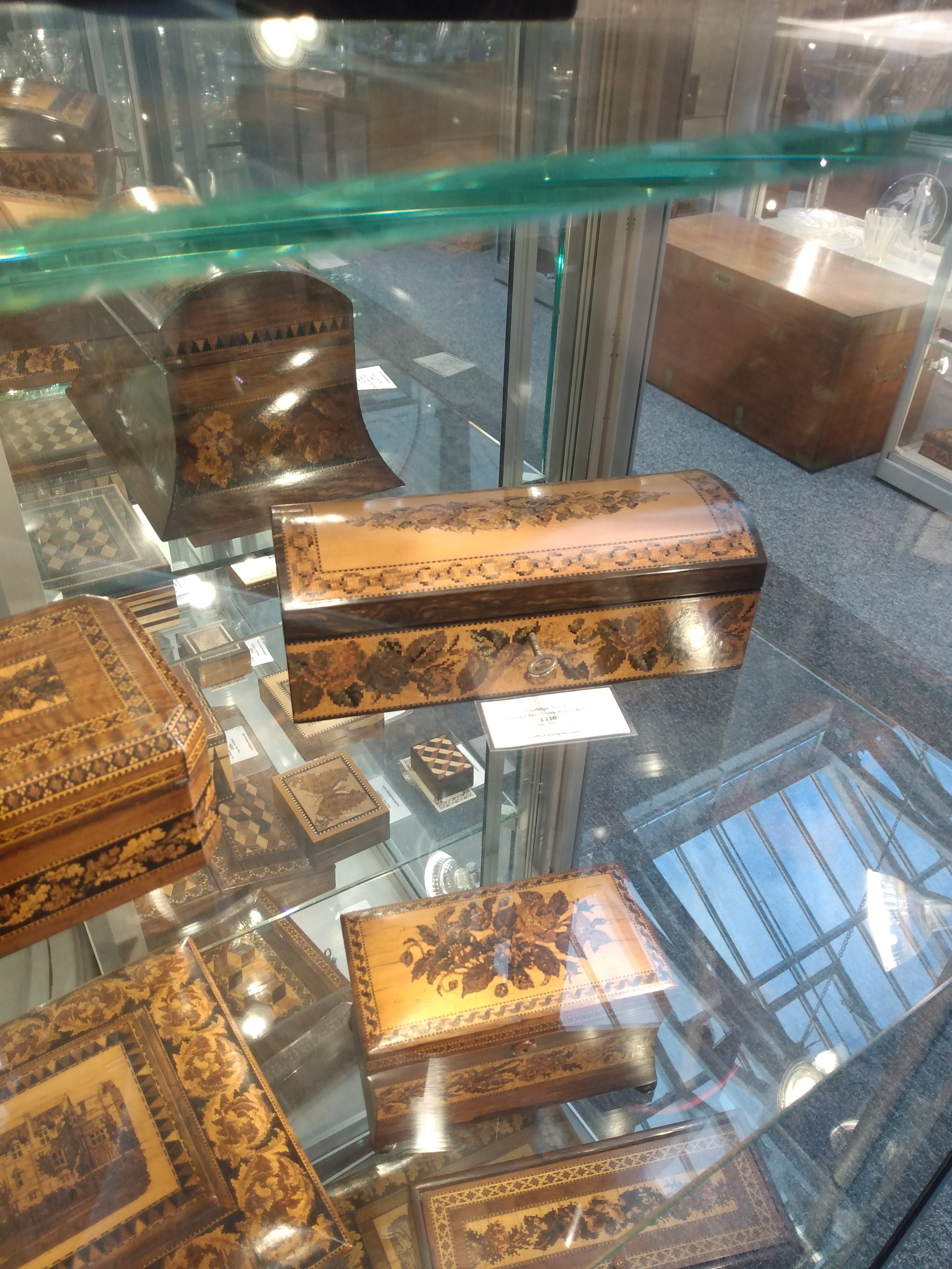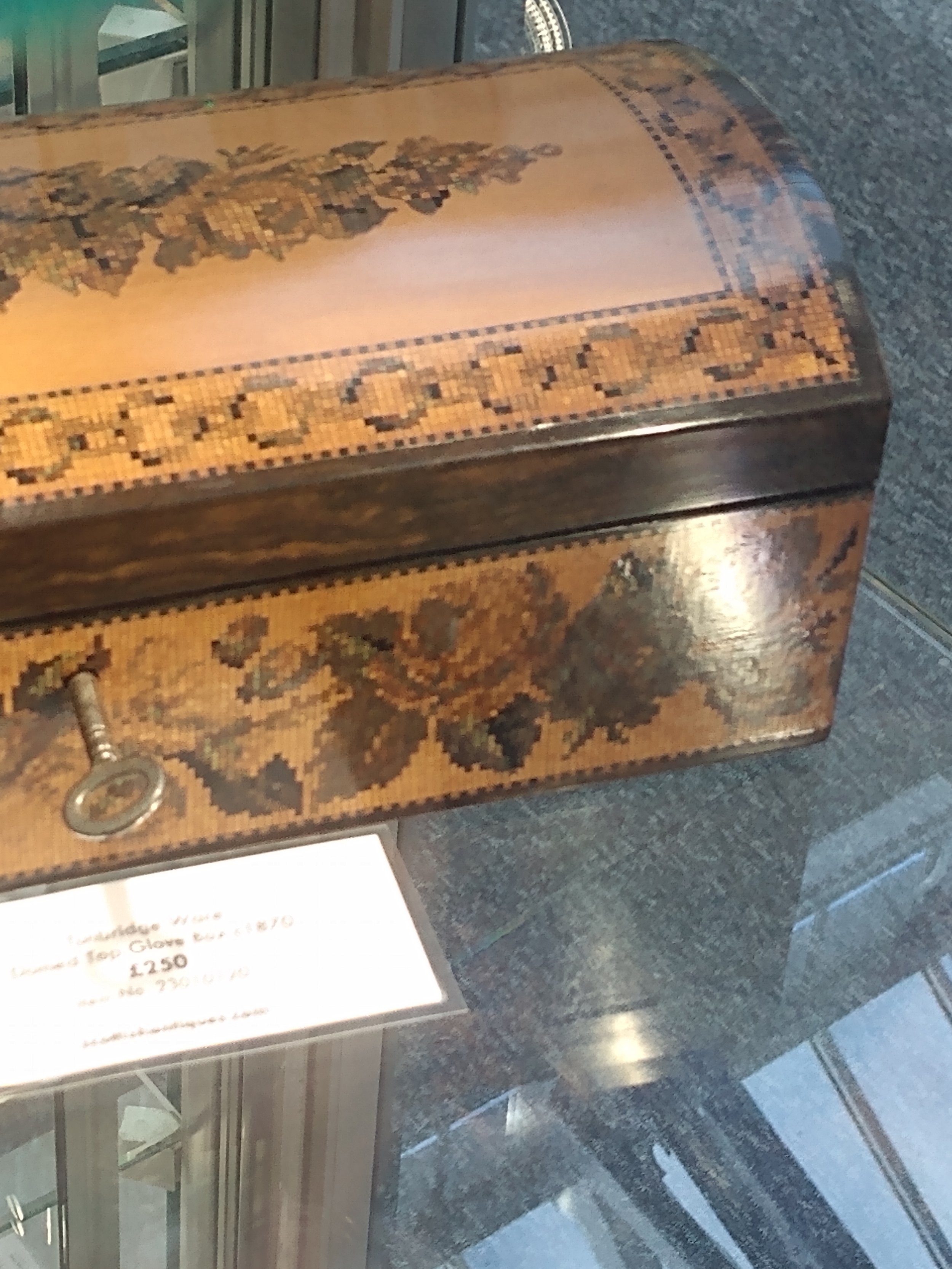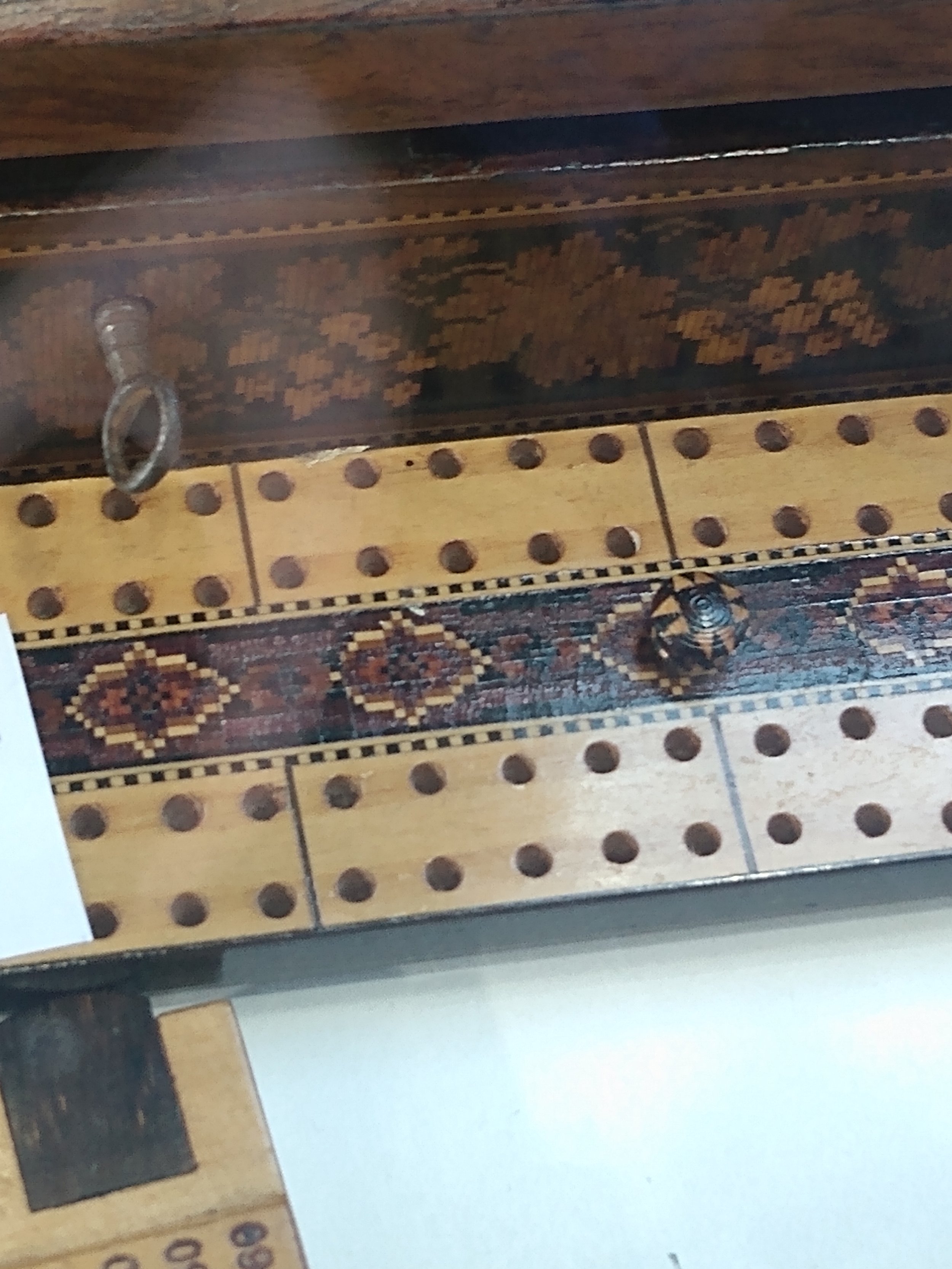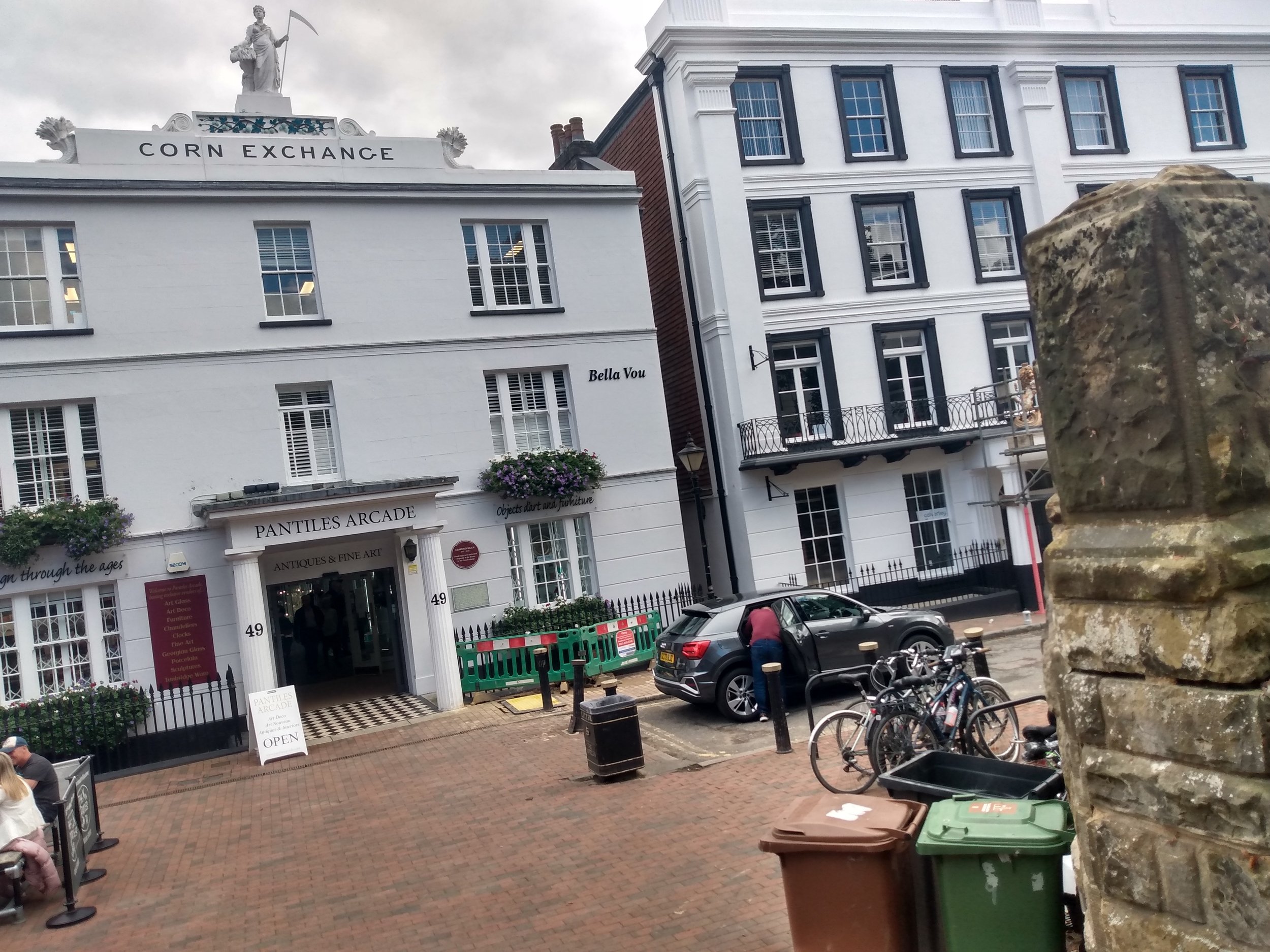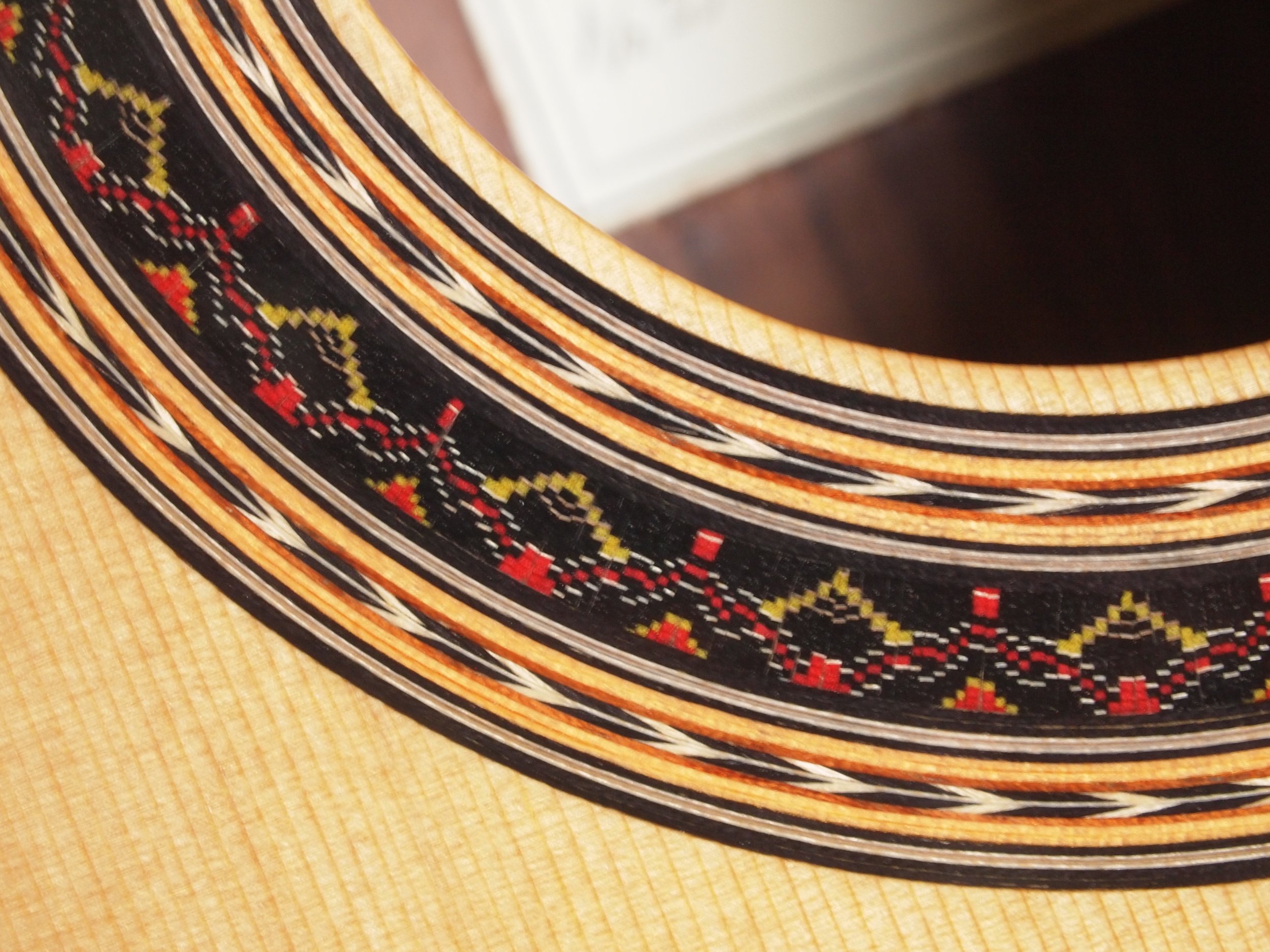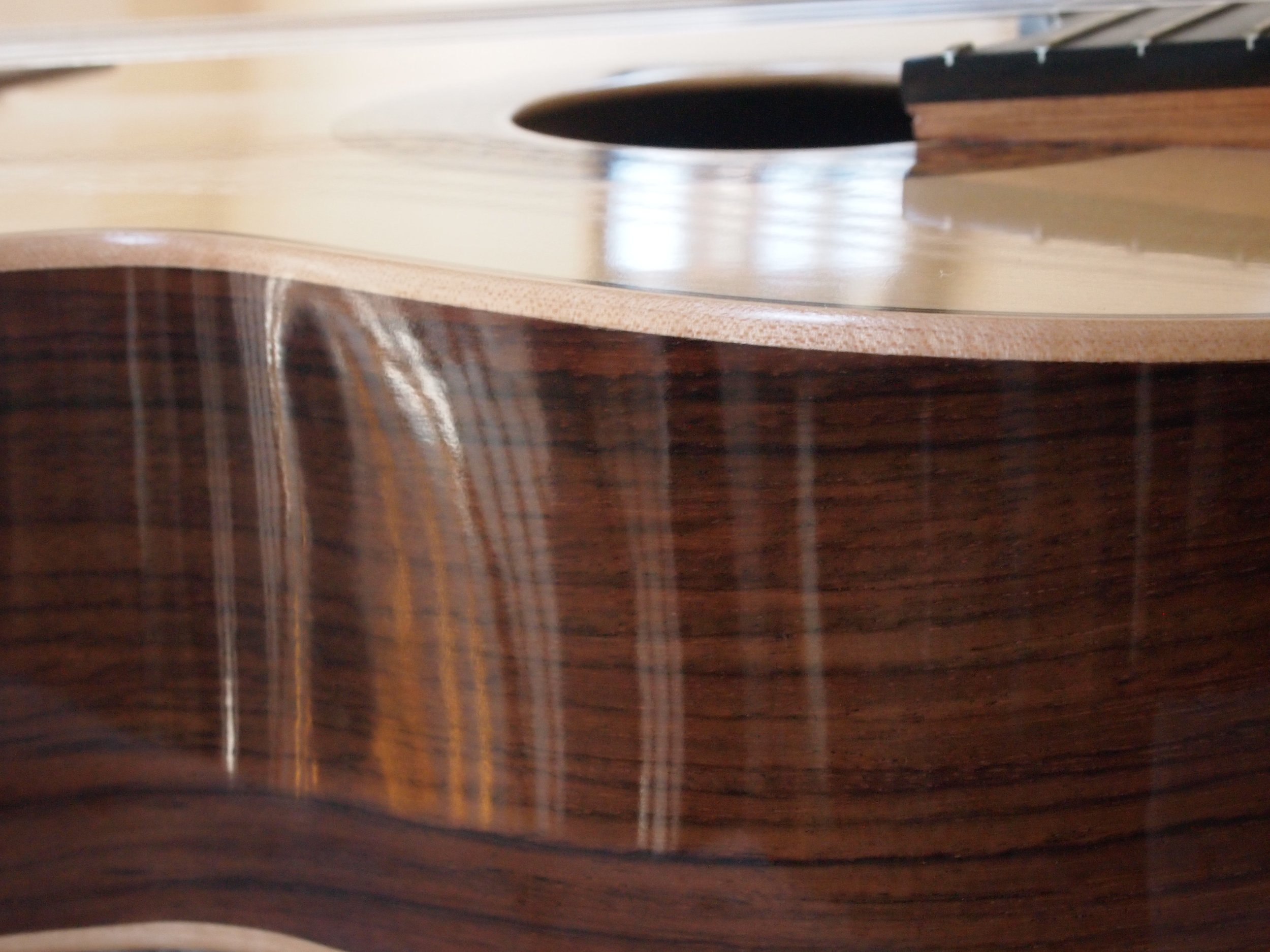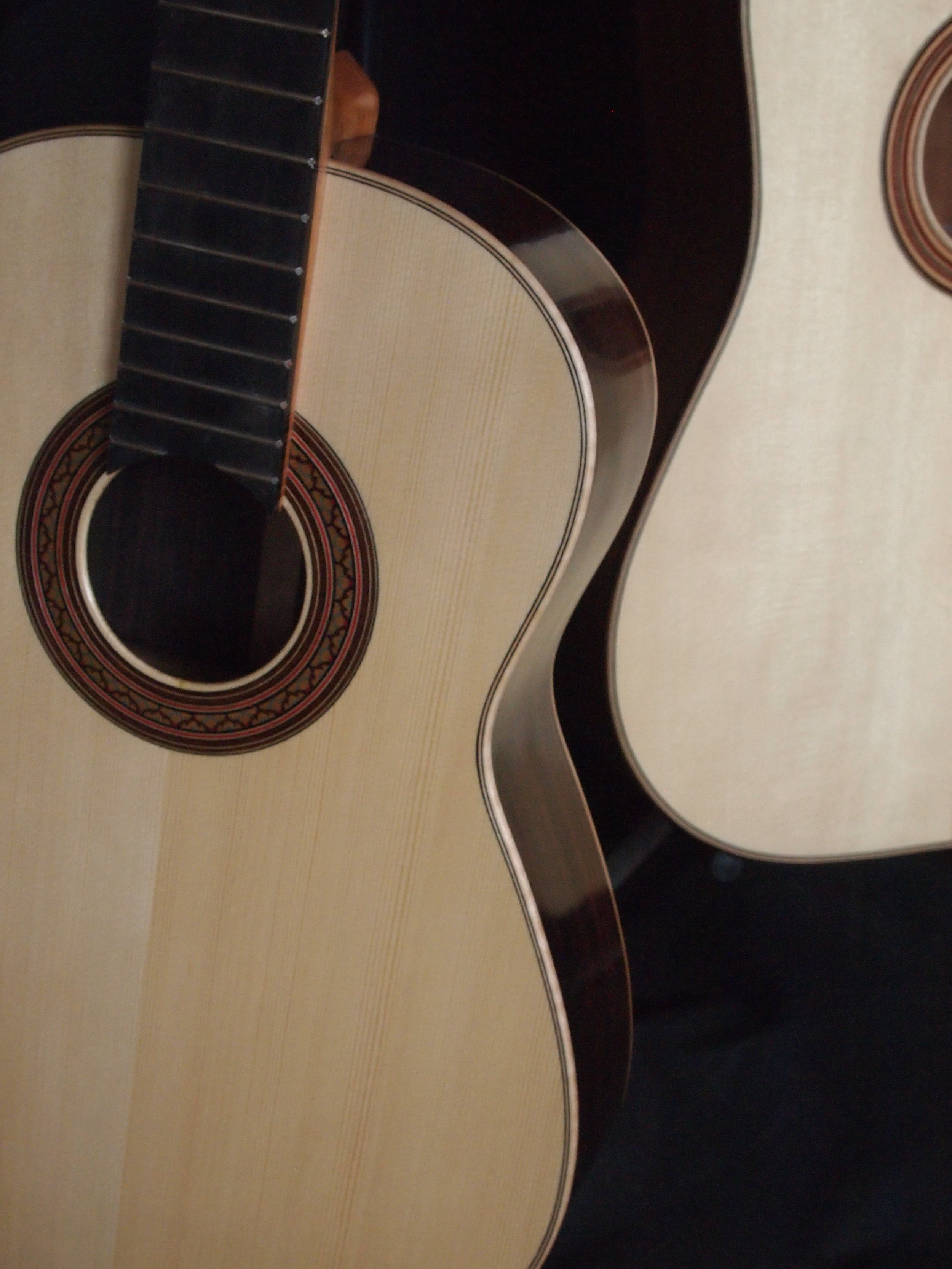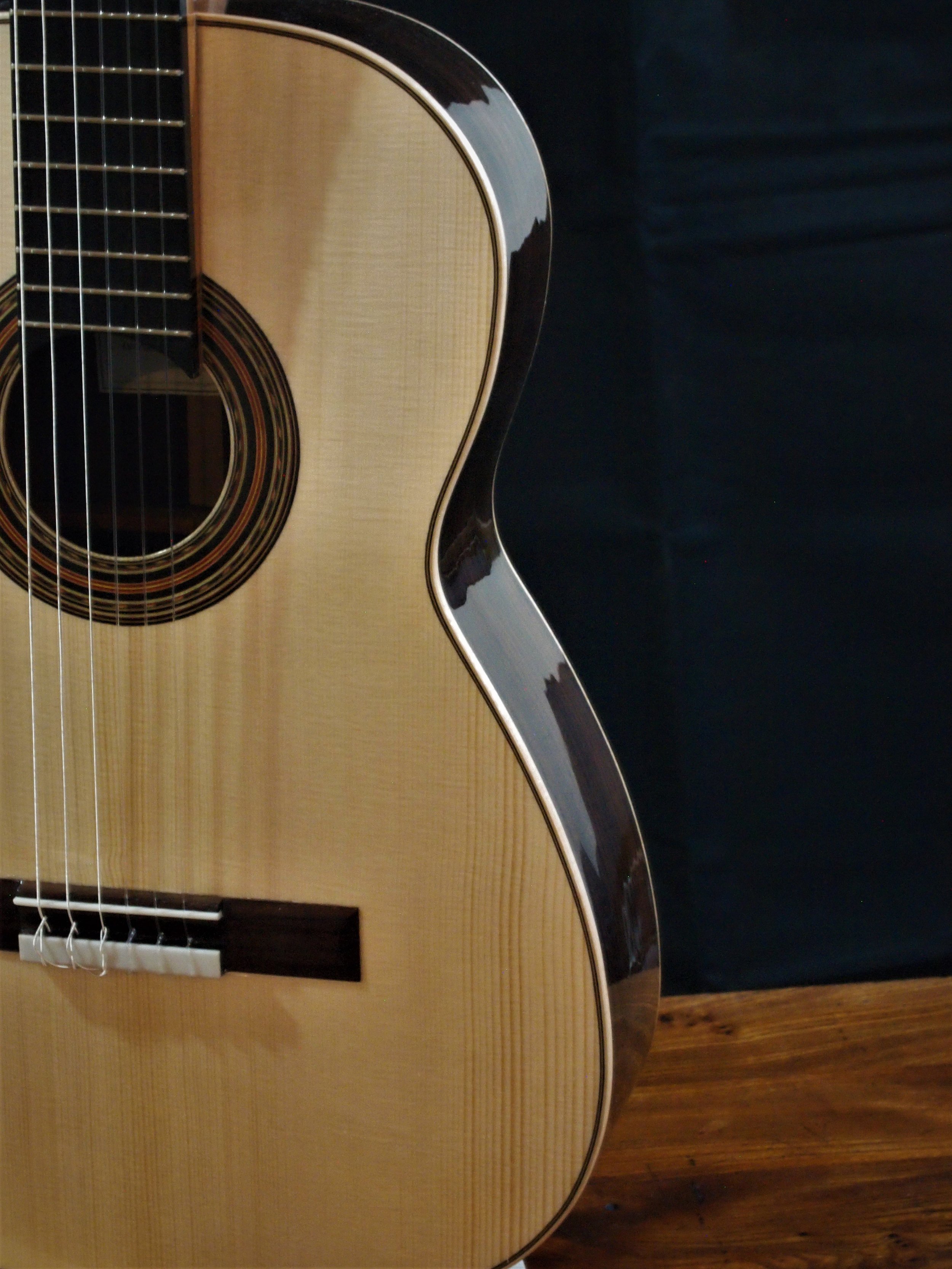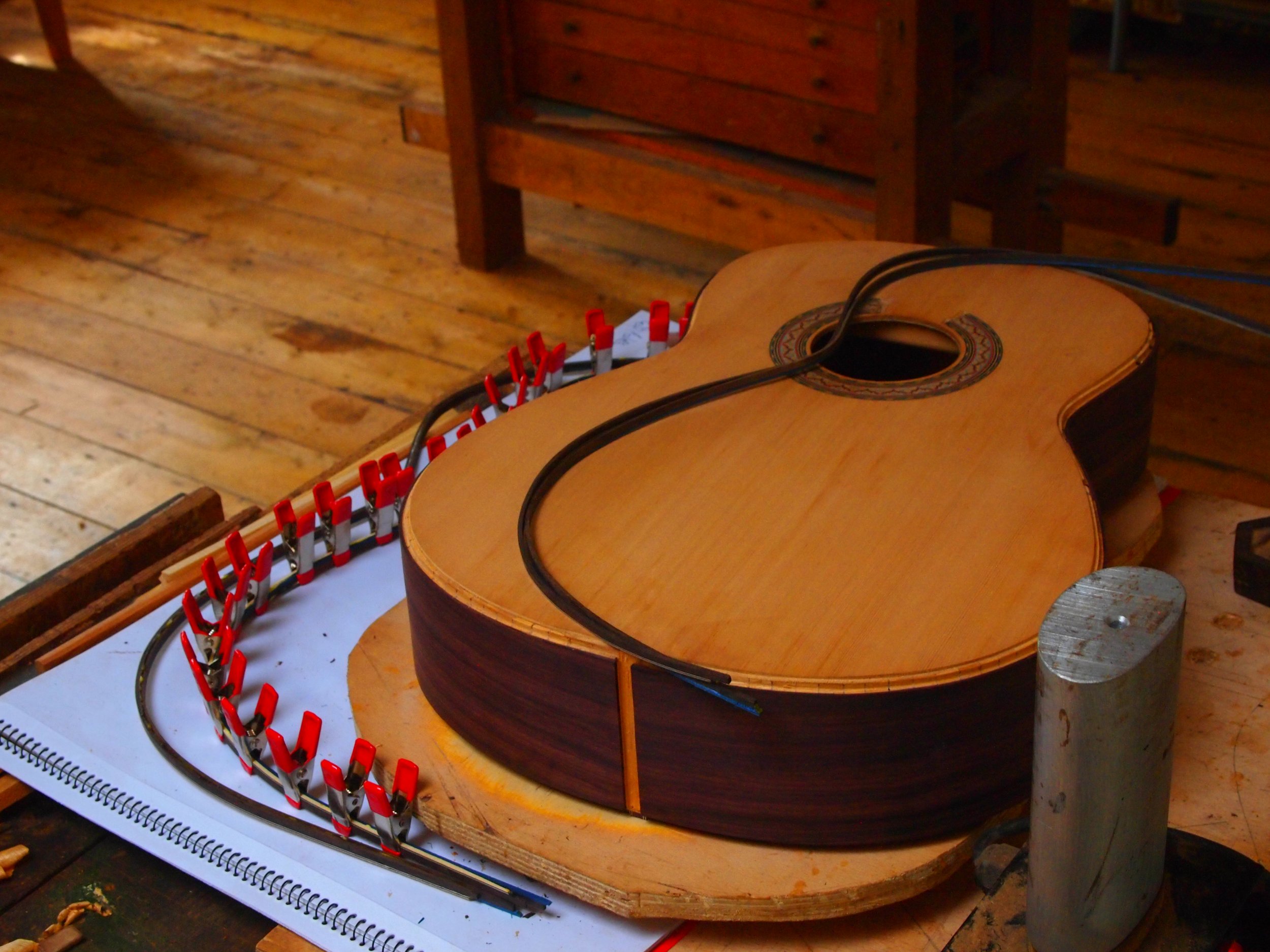I was in my early 20s, and I was about to begin making my first guitar for several years. I was excited, but at that time, the prospect of making a guitar also seemed like a monumental challenge. Having heard that there was a guitar concert happening in a nearby village, I set off on a winter's evening by train to a village called Stewartby, in search of some inspiration. I definitely found it. The guitarist was Valerie Hartzell. As I listened to her play, I knew I was hearing the full potential of the classical guitar. I could picture what I wanted my own guitars to sound like. It was a game changing concert for me. Unbeknownst to me at the time, it was also my first encounter with a short scale guitar.
Here Valerie plays her Greg Byers guitar. It can be seen here that a 630mm guitar doesn’t seem noticeably smaller than a 650mm guitar.
Valerie played a 630mm guitar built by an American guitar maker called Greg Byers. Usually guitars have a scale length of 650mm - that’s 650mm from the nut to the saddle - anything shorter than that is considered ‘short-scale’. Since 650 is considered full sized, it may not occur to many guitarists that other options may be more suitable for them. If you consider the wide range of heights and hand sizes amongst men, women and children, it really doesn’t make sense that everyone should use the same size guitar. And as shown by Valerie’s performance, which has inspired me throughout my whole career, it is more than possible to make a real impact with a short scale guitar.
How many classical guitar sizes are there?
Any scale length is technically possible. 650, as I mentioned, is full sized. 630 is a common length for a short scale guitar, the difference is noticeable but still subtle. A scale length of 610, or more precisely, 613.5, is the length of a full size guitar with a capo at the first fret. In case you are reading this in 2024, my next two guitars, in early Spring, will have a scale length of around 613.5mm, so if you are curious to try such an instrument, don’t hesitate to get in touch.
Smaller instruments than that are of course possible. I recently watched a guitar orchestra performance; as well as normal guitars, they had massive guitars with their strings tuned an octave lower, and smaller guitars with their strings tuned higher. On the larger side of things, 660mm instruments aren’t uncommon. The largest I’ve tried was 720mm, details of which you can find here: https://www.michaeledgeworthguitars.com/en/blog/a-marvellous-and-historic-instrument
Guitar sizes are particularly confusing because different people use different units of measurement. Here’s a table to simplify things a bit, with the size, an then the corresponding scale length in inches and millimetres:
4/4 (Full size) -650mm - 26”
3/4 - 580mm - 22.8”
1/2 - 535mm - 21”
1/4 - 480mm - 19”
On the design of smaller instruments
There are some difficulties for guitar makers when building a shorter or longer scale instrument; to a degree the whole instrument has to be slightly redesigned. For example, if the scale length is shorter, the guitar’s bridge needs to be closer to the soundhole. That can look strange if the guitar maker isn’t careful. To avoid that looking weird, the guitar’s body needs to be made slightly smaller. Another such adjustment is the bracing. A smaller guitar will need lighter bracing, and higher tension strings.
One thing that tends to stay the same on a smaller guitar is the width of the fingerboard. On a regular guitar, the fingerboard is 52mm wide at the nut and 62mm at the 12th fret. If the fingerboard is made much narrower than this, the instrument quickly starts to become difficult to play, as the strings are simply too close together.
I think a huge advantage of handcrafted guitars is that it’s possible to find the ideal instrument for you, something that not only sounds amazing, but fits you like a glove. The scale length of an instrument is definitely a part of that and shouldn’t be overlooked. A skilled guitar maker would be able to make the small adjustments in bracing and design to make a smaller instrument sing, despite the difference in size and string tension. Just as Greg Byers did with Valerie’s instrument. I spoke to Valerie later about her guitar. I remember it as being really powerful! She said that Greg was displaying it at a guitar festival in the US, where she tried it and decided it was the instrument for her.
Torres, considered the father of the modern classical guitar as we know it, built many smaller instruments. The same for earlier makers, such as Lacote and Panormo.
What about guitars for children? What size classical/flamenco guitar should I buy for my child?
It can be difficult to find guitars for young guitarists that are made with the same care as full sized instruments. However, with the right instrument, any young guitarist will be far more enthusiastic to pick up the instrument, and avoid any bad habits caused by an unsuitable guitar.
If possible, the best way to find the right size would be to try out several sizes and see what’s most comfortable for them. In some cases, it’s possible for quite small guitarists to use a 650 or 630mm size instrument. Although the size of a guitar is measured by its ‘scale length’ (the length of the string from nut to saddle), another important factor is the size of the guitar’s body. Too big or small, or too deep, and the guitar can feel awkward and cumbersome to play.
There are some videos of a young Ana Vidovic playing a full sized guitar when she was very young, and the same with a young Xuefei Yang. On the other hand, I believe Valerie Hartzell told me that she visited the Ramirez workshop when she was a child, with her parents, and they bought a small Ramirez guitar, which she used throughout her childhood.
Classical guitars for adults are often finished with French polish. With kids, it might be a bad idea to use something so delicate, so a lacquer finish would almost certainly be the answer here.
I remember being about 8 and beginning to learn the violin, and I remember thinking how brilliant the violin itself seemed to me. I had one on loan from my school. It and it’s bow were so beautiful, I really wanted to learn how to play it! I witnessed the same with my two sisters, as they learned the piano and saxophone respectively. The glistening golden shine of a saxophone… it’s very alluring. I think for the same reason, it’s worth getting a guitar of reasonable quality for a young guitarist; something they are drawn to play. If they do grow out of it, they might still keep it forever. I think that Valerie, for example, still has her Ramirez guitar from childhood.
